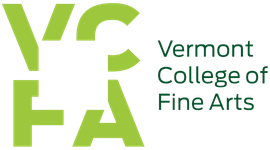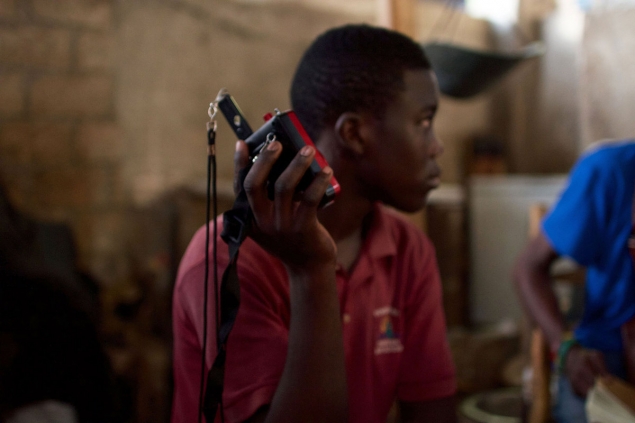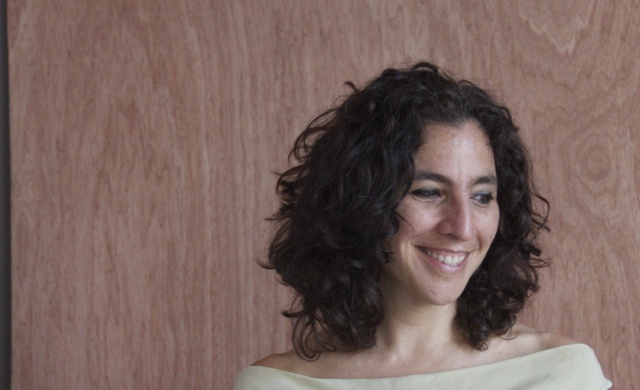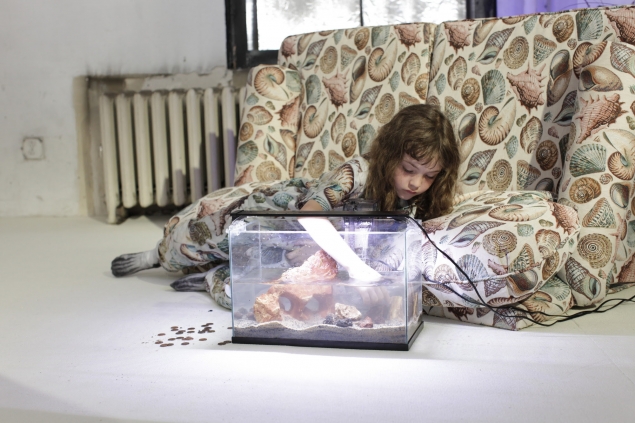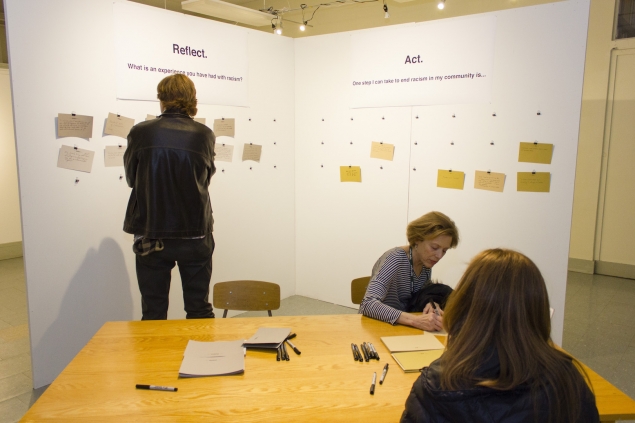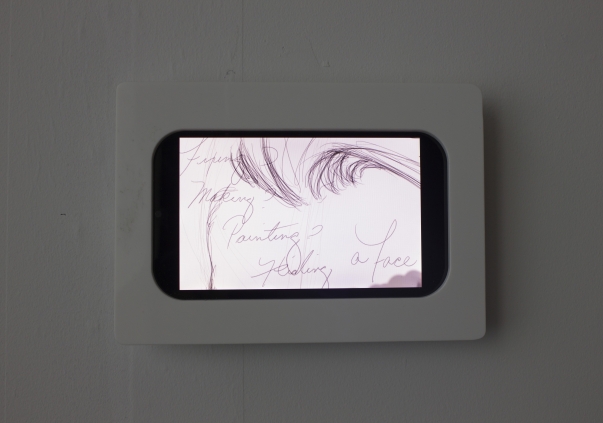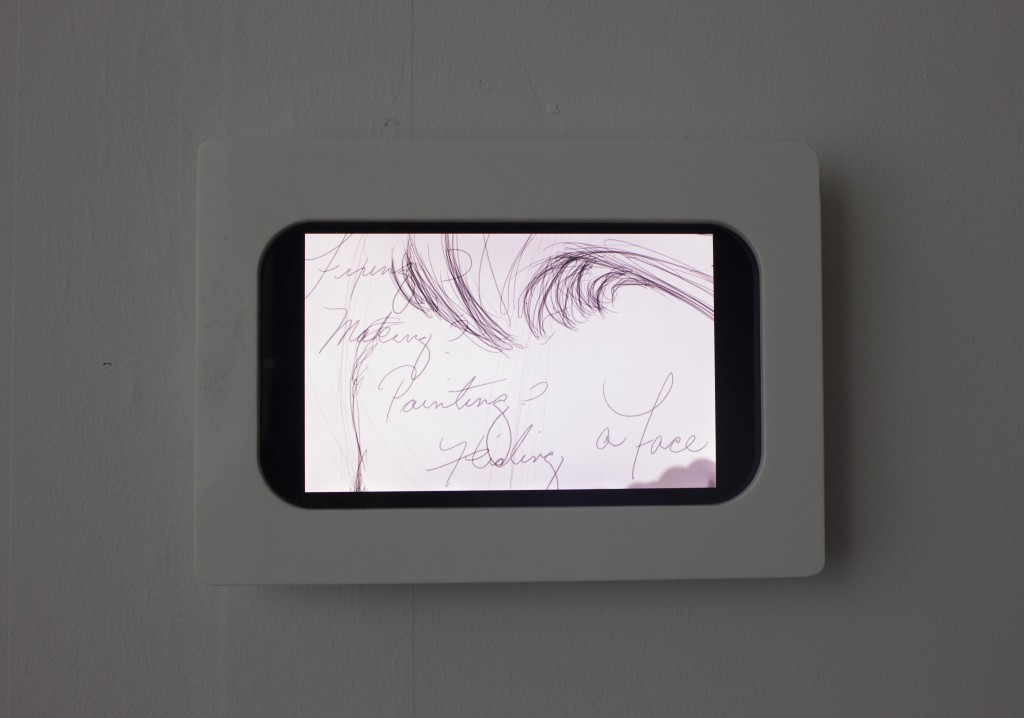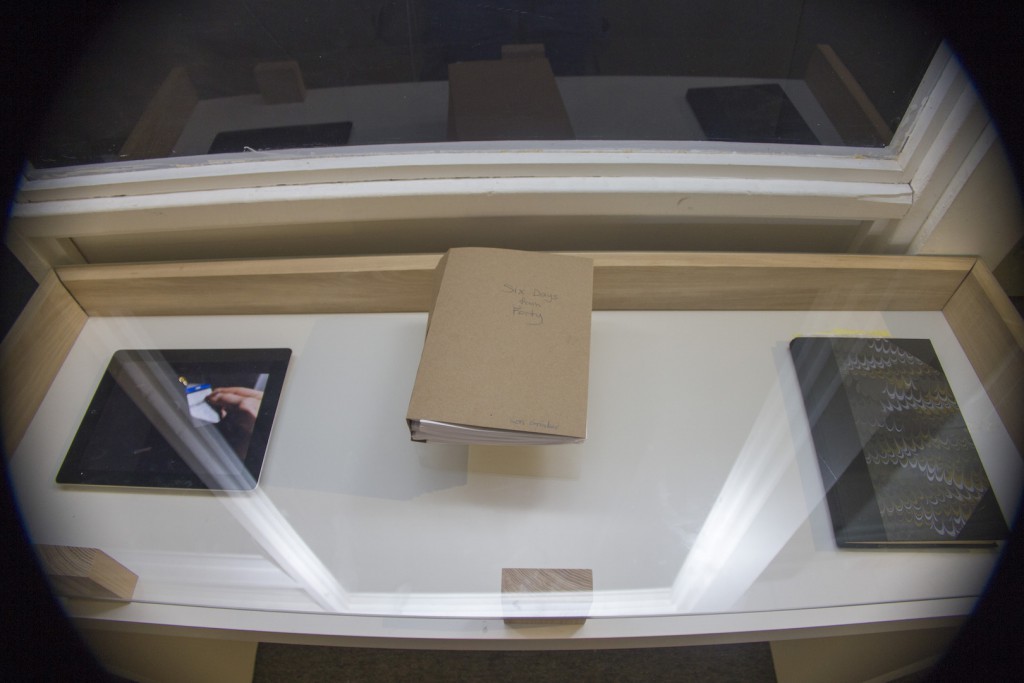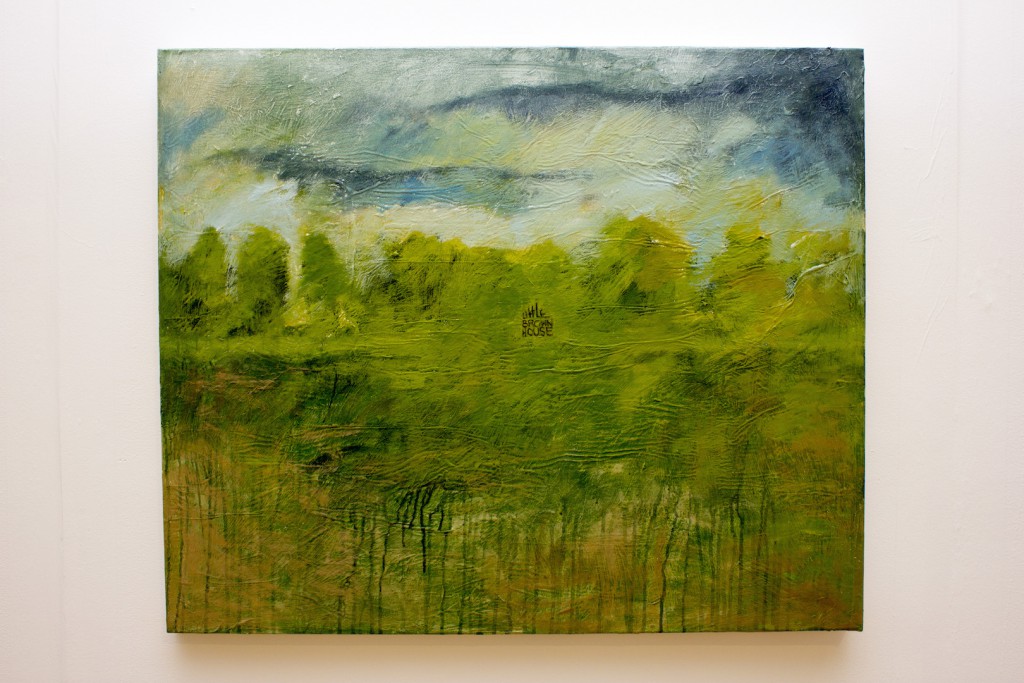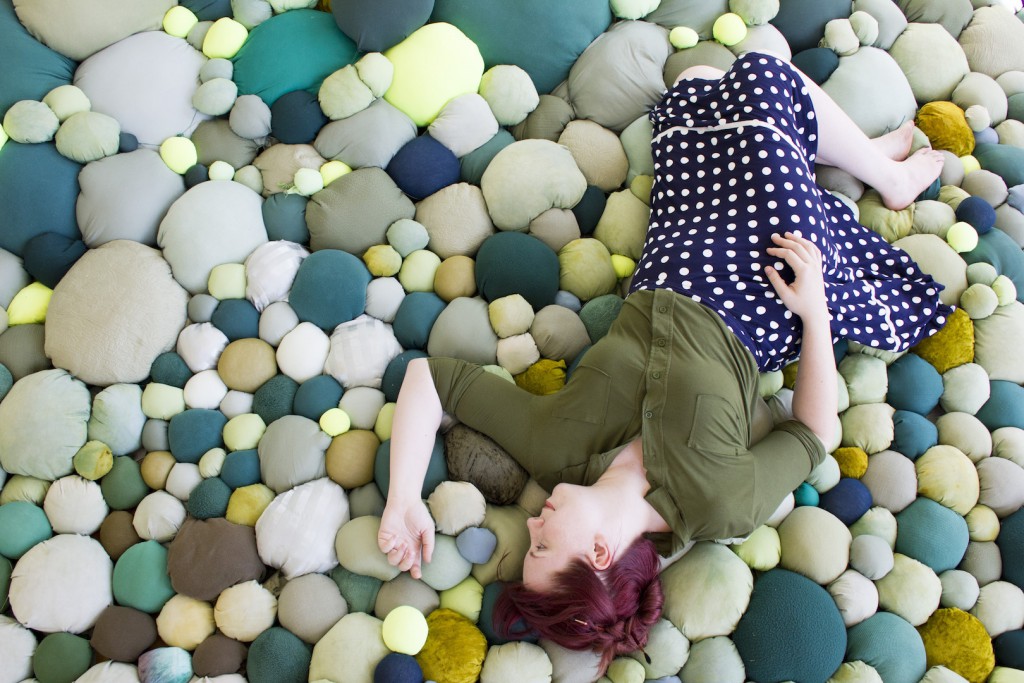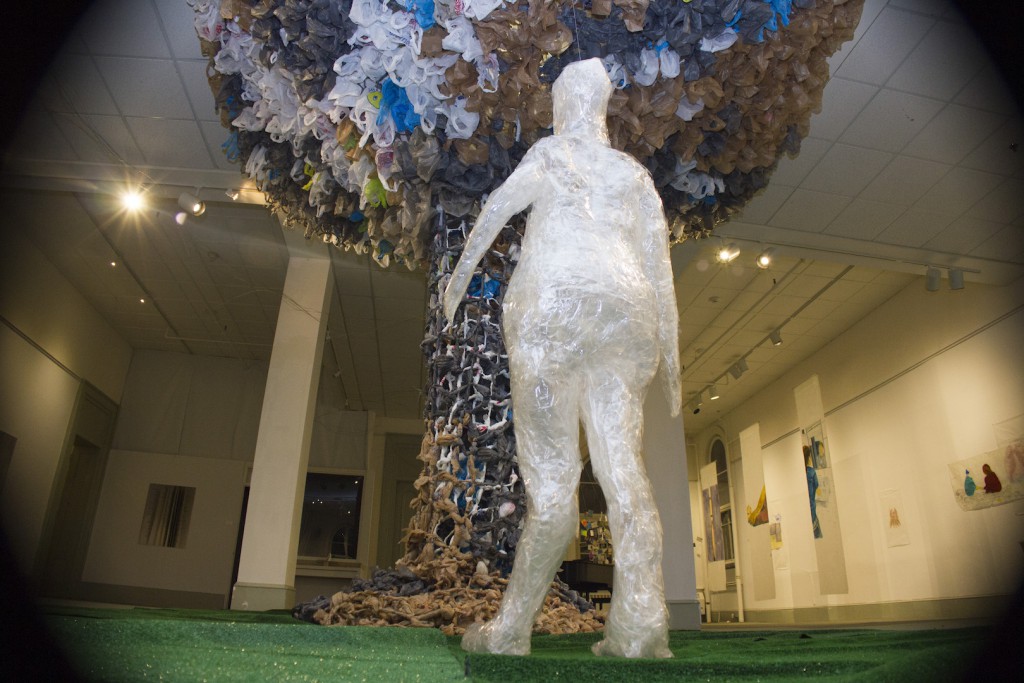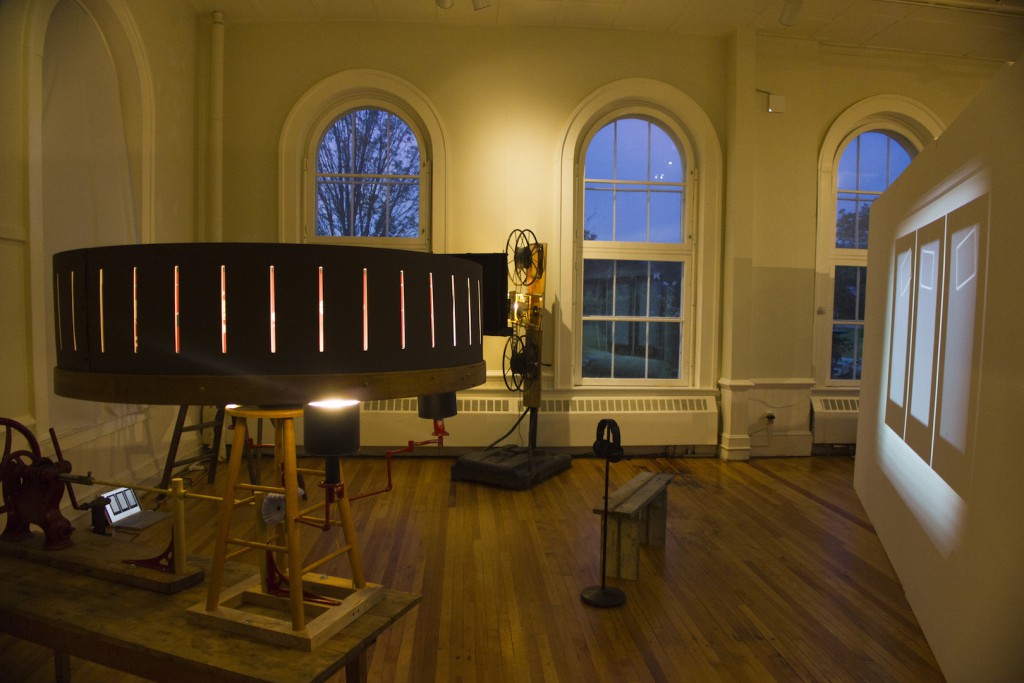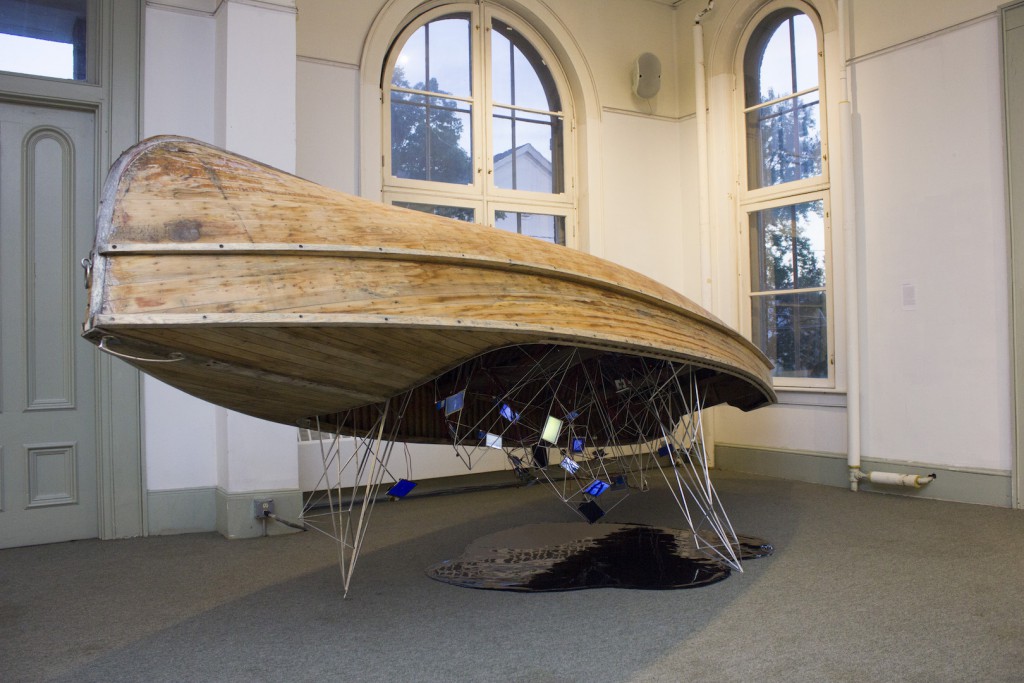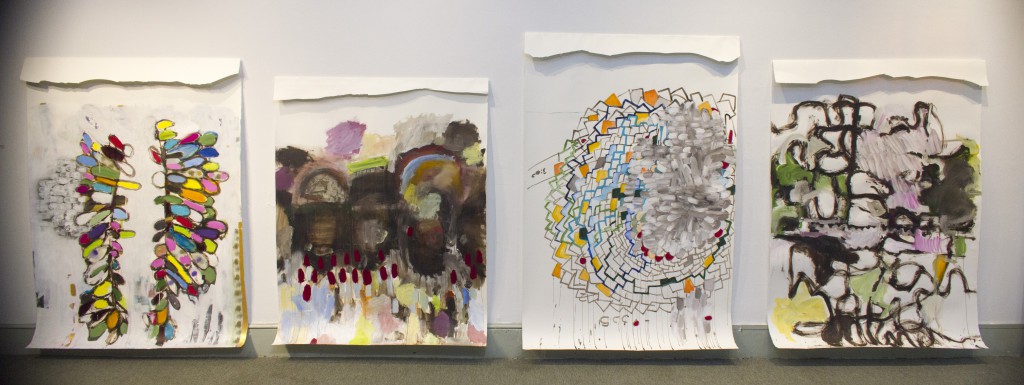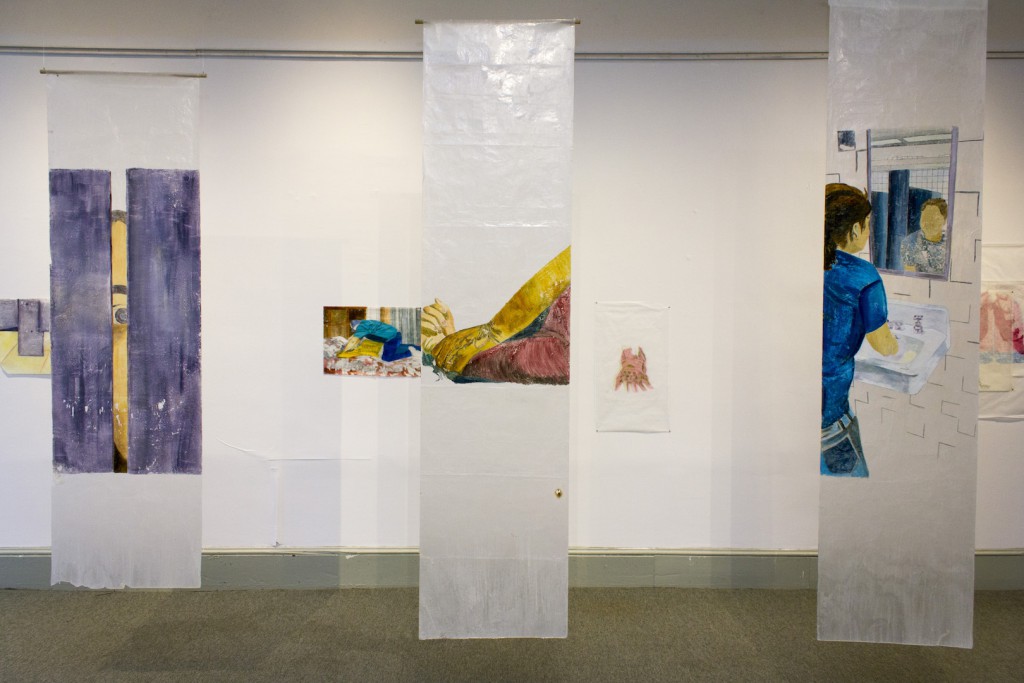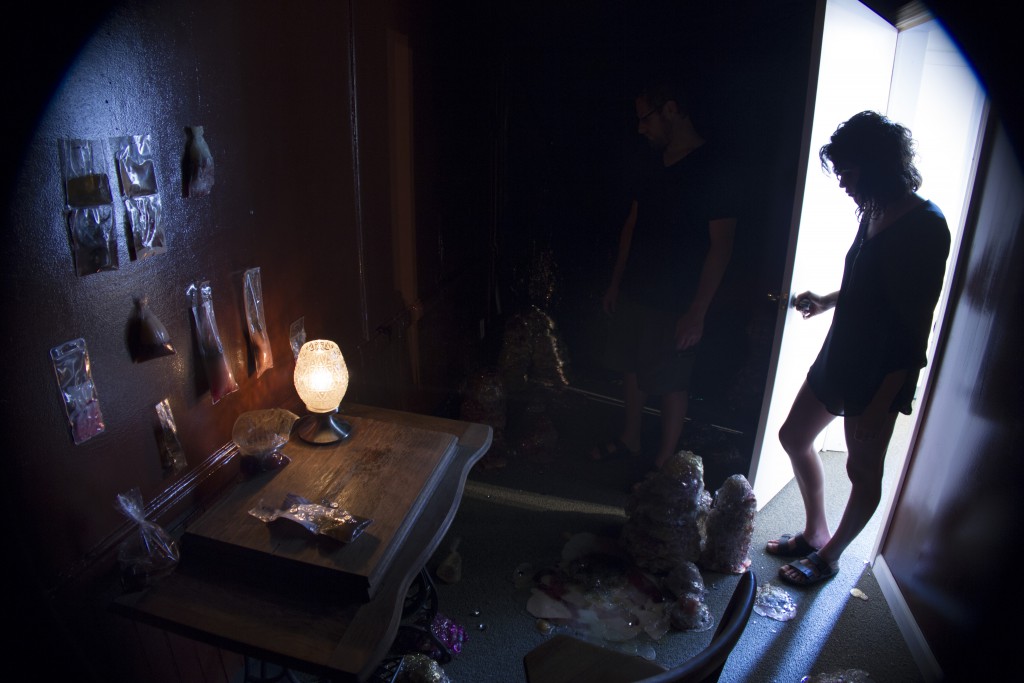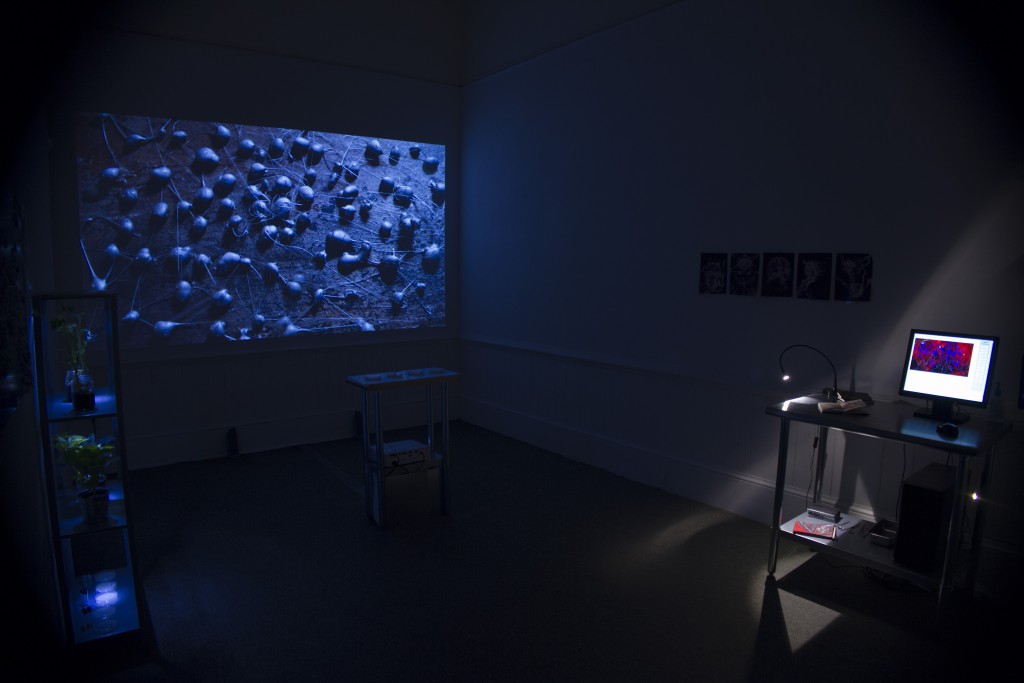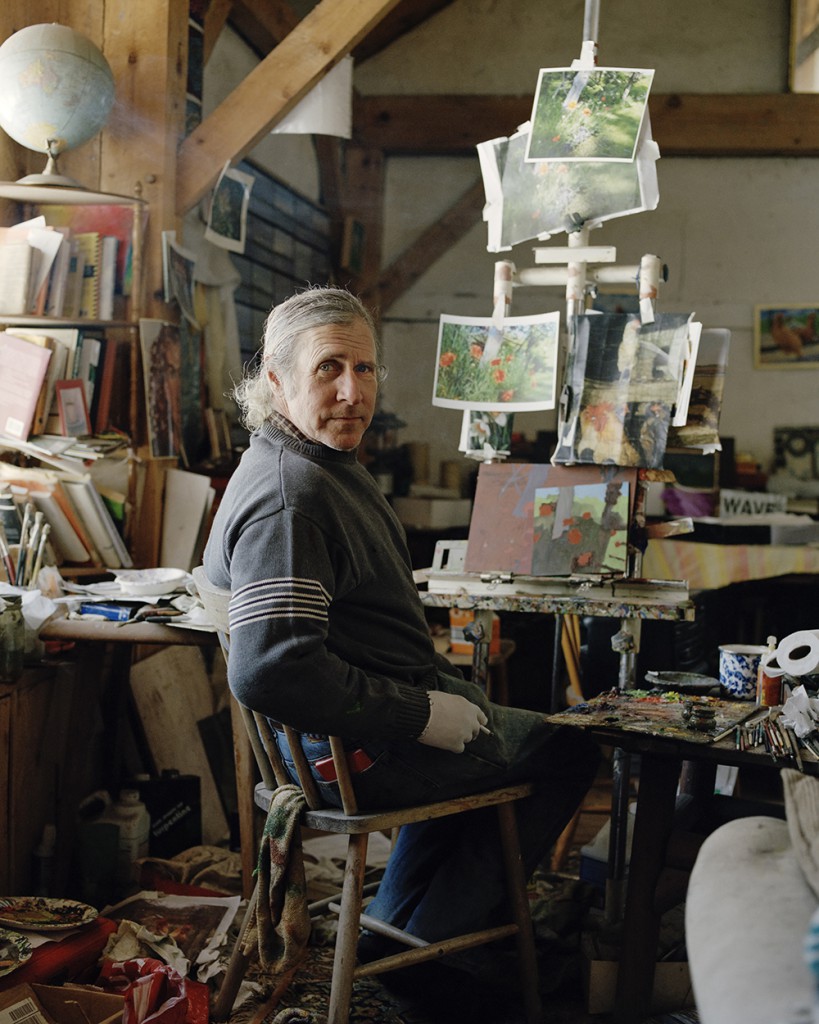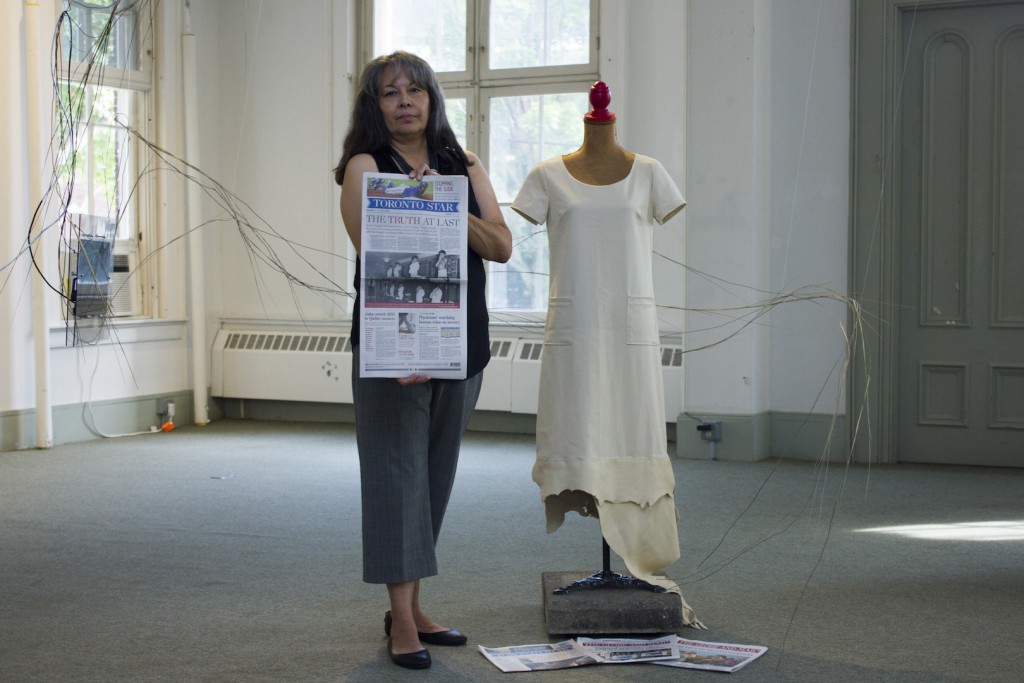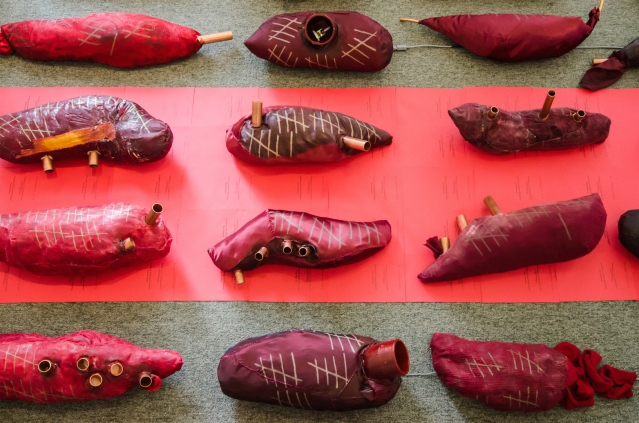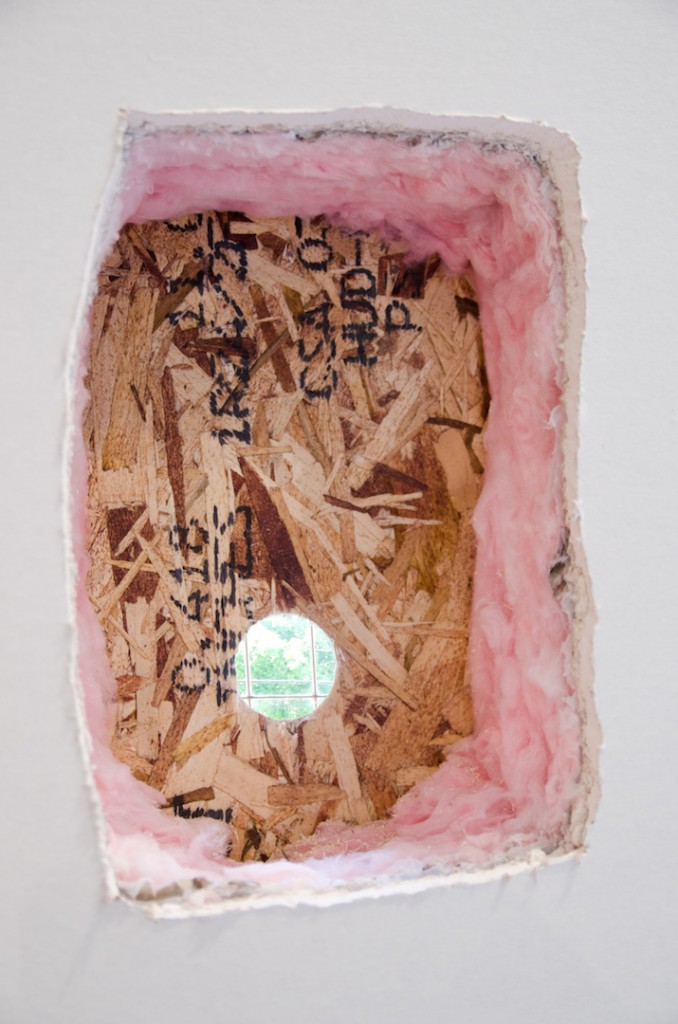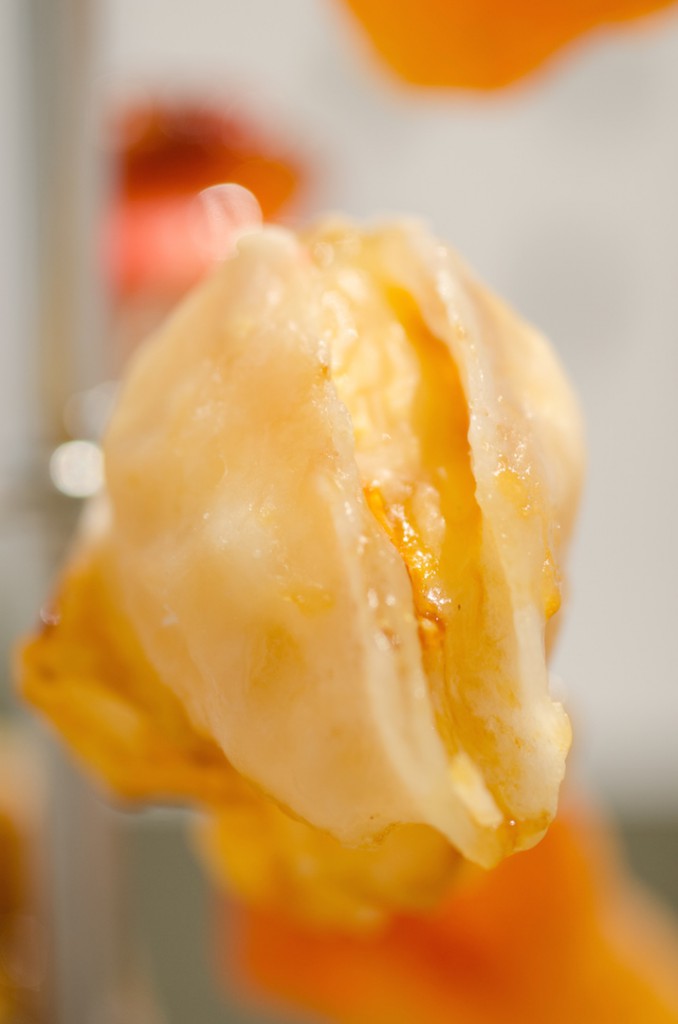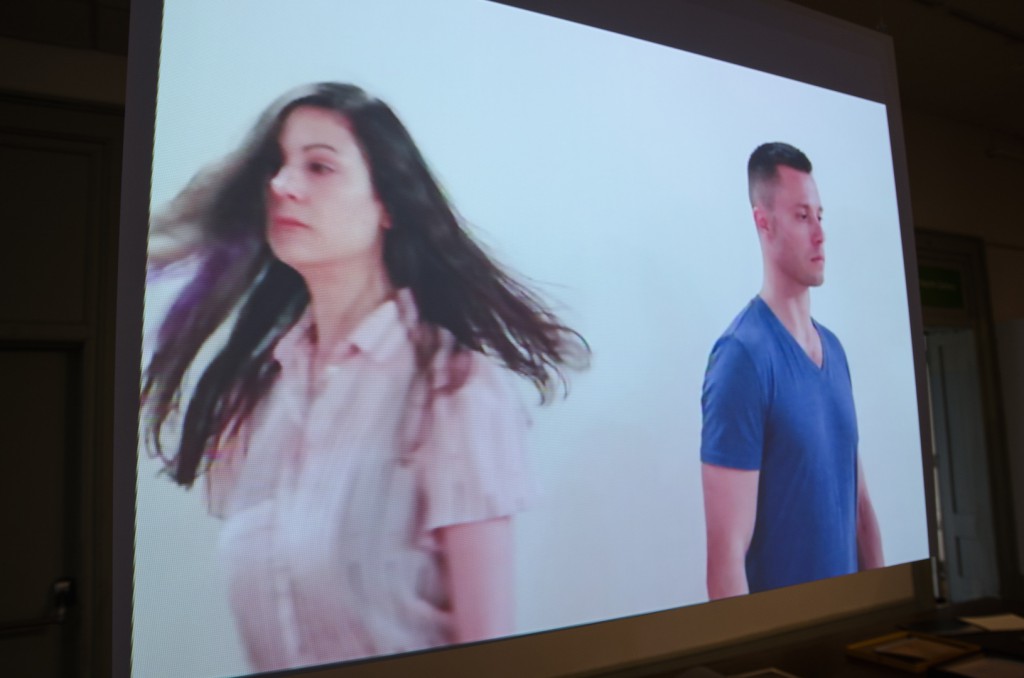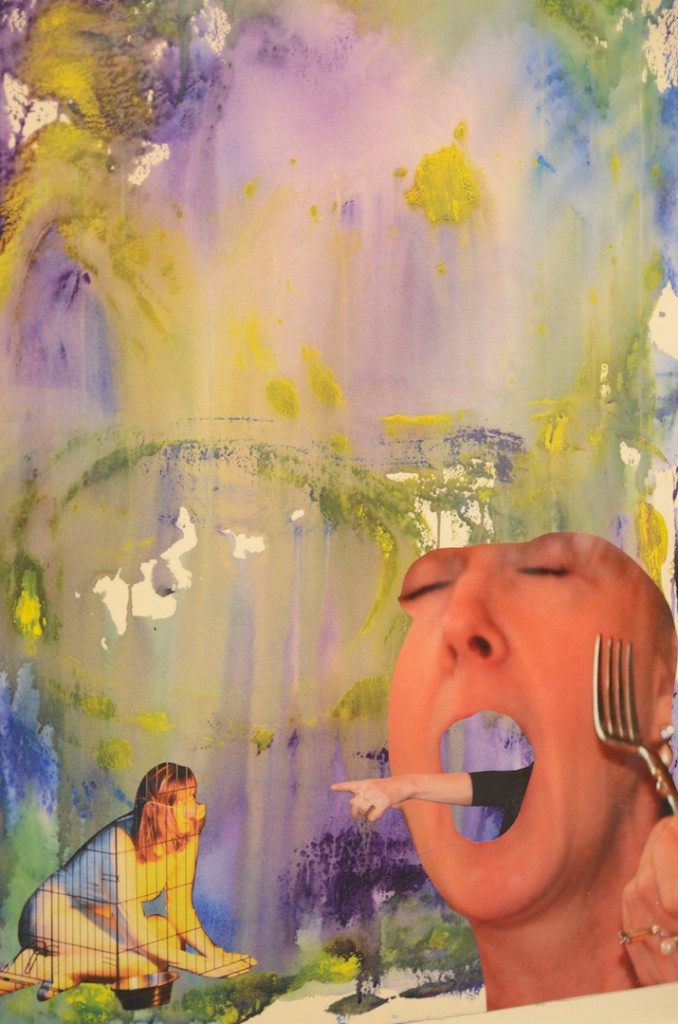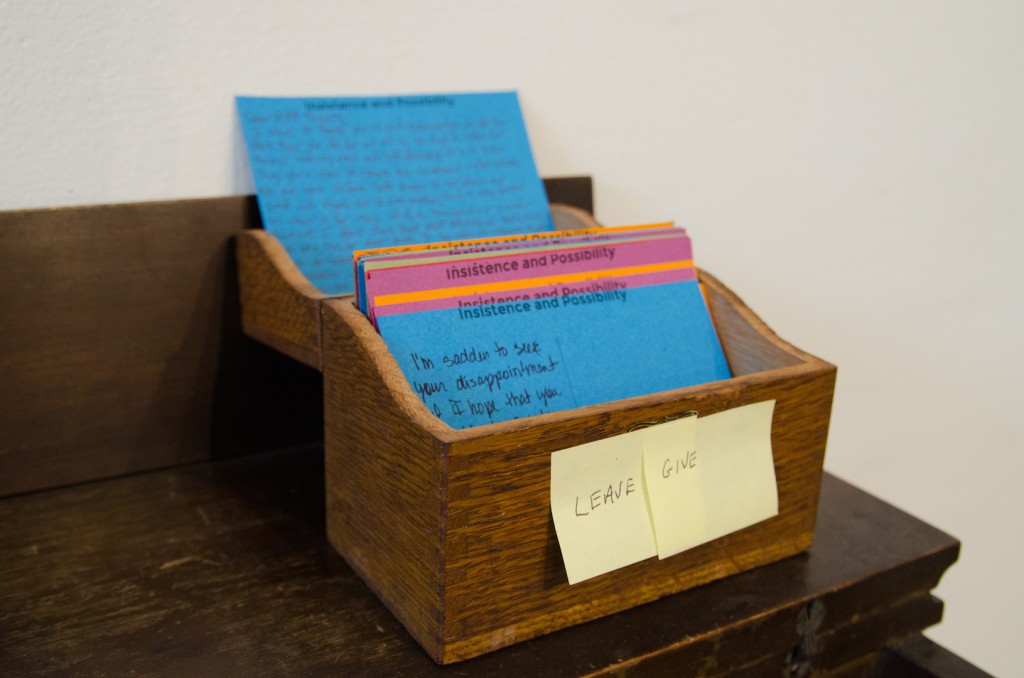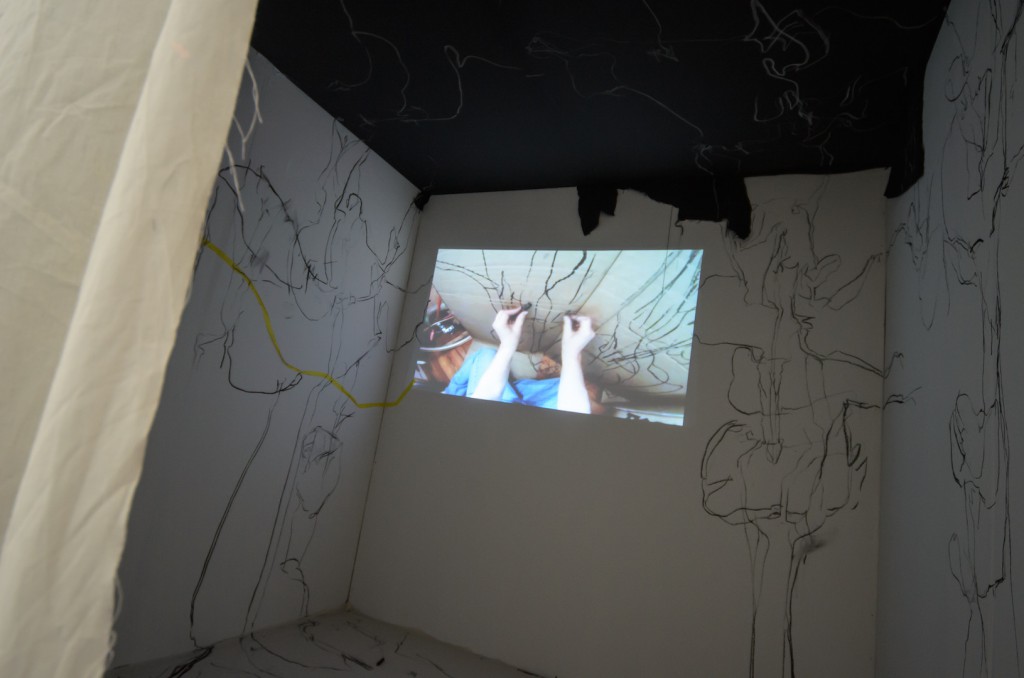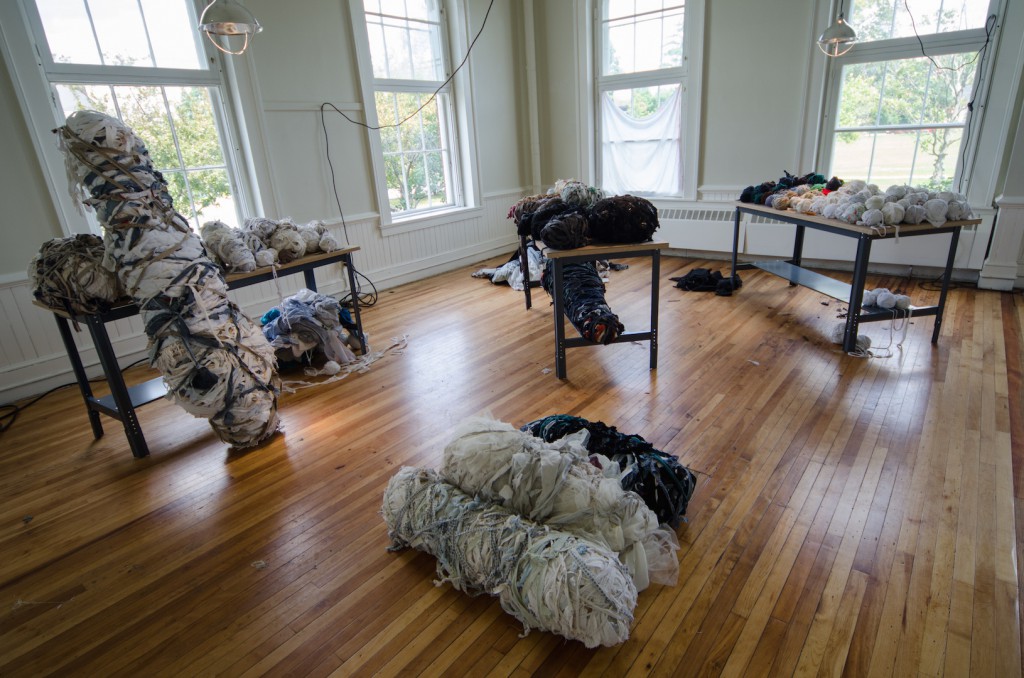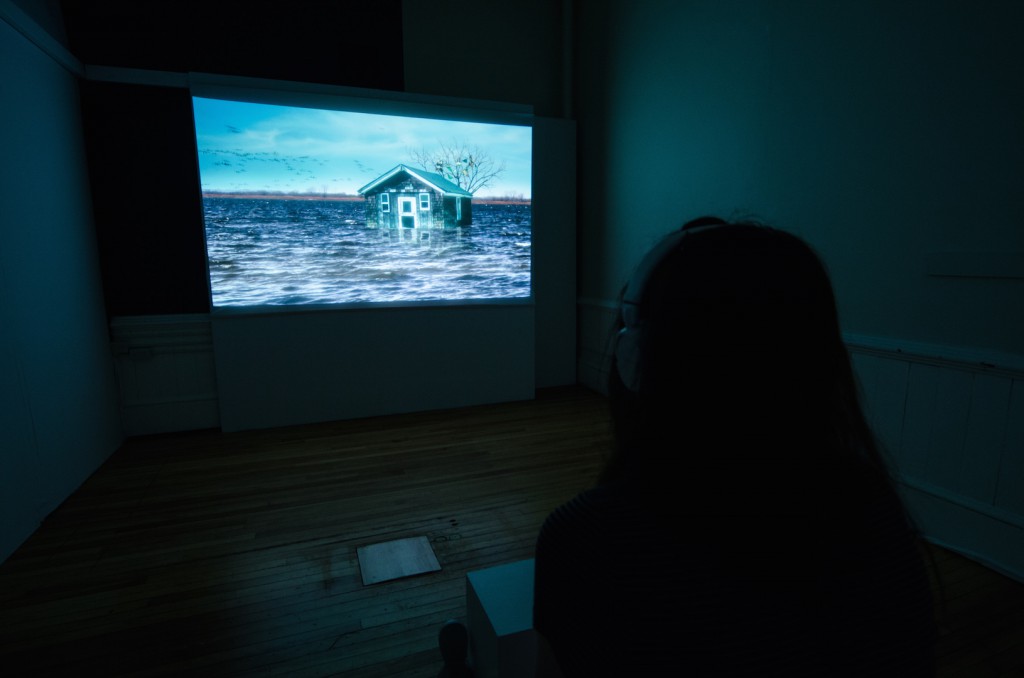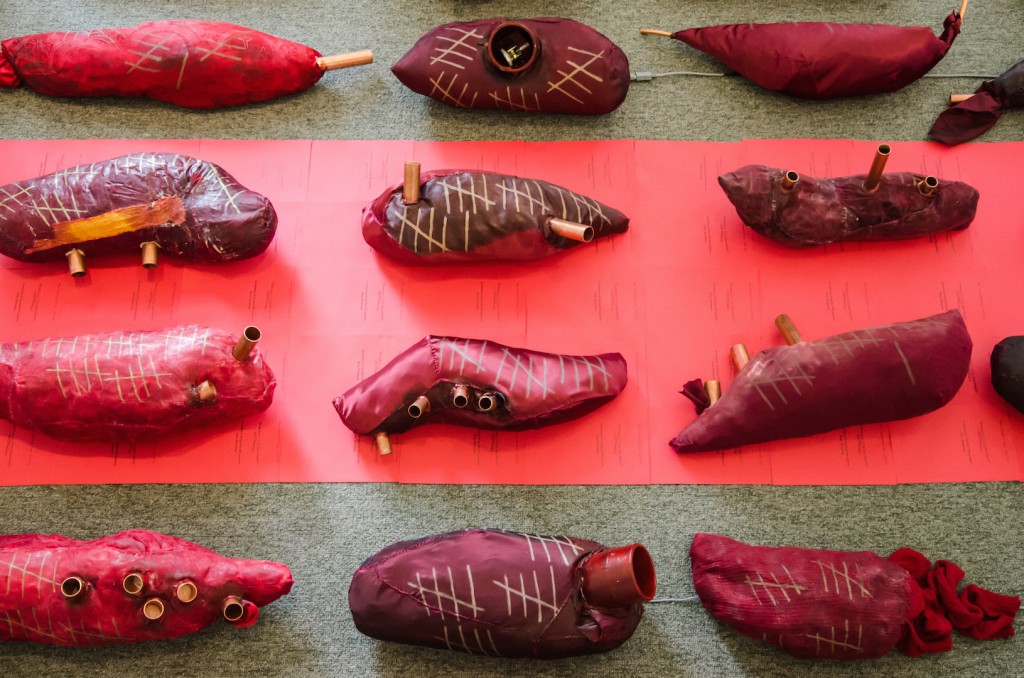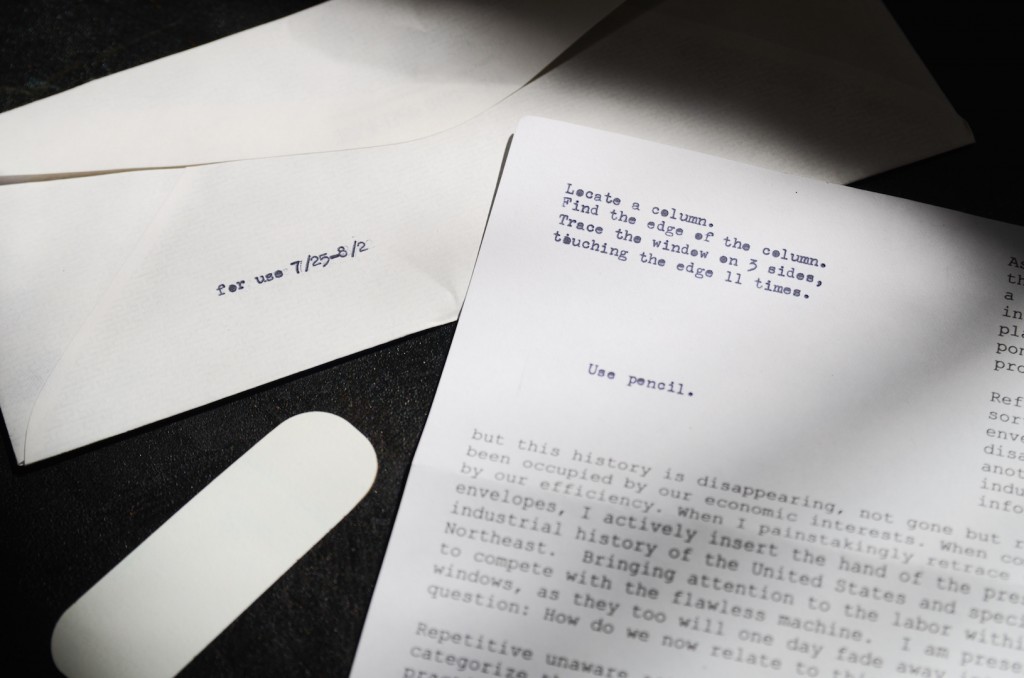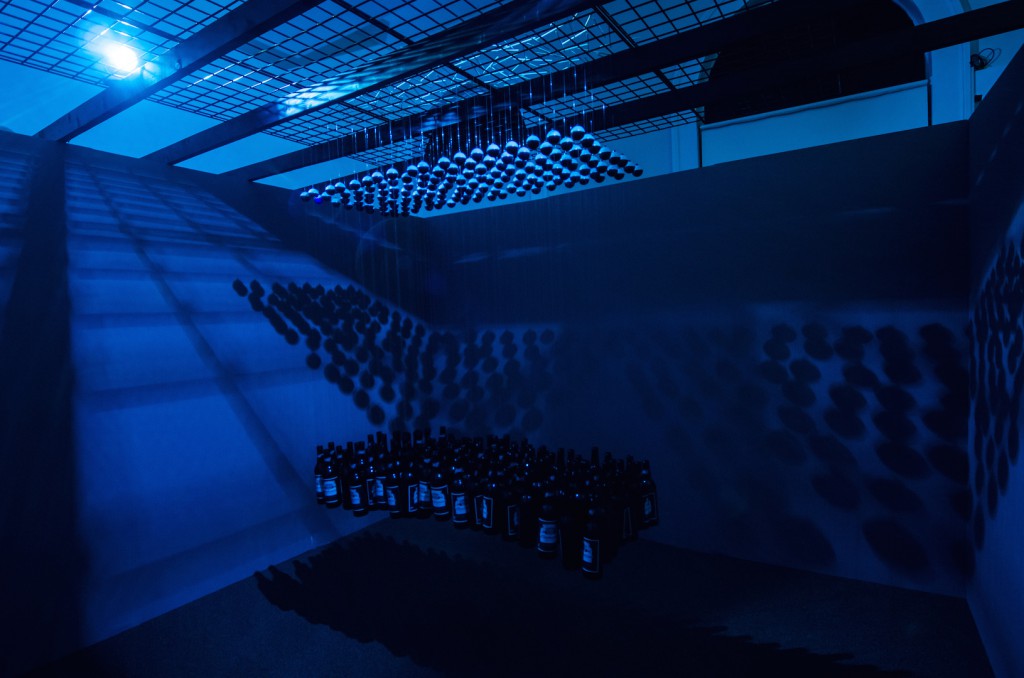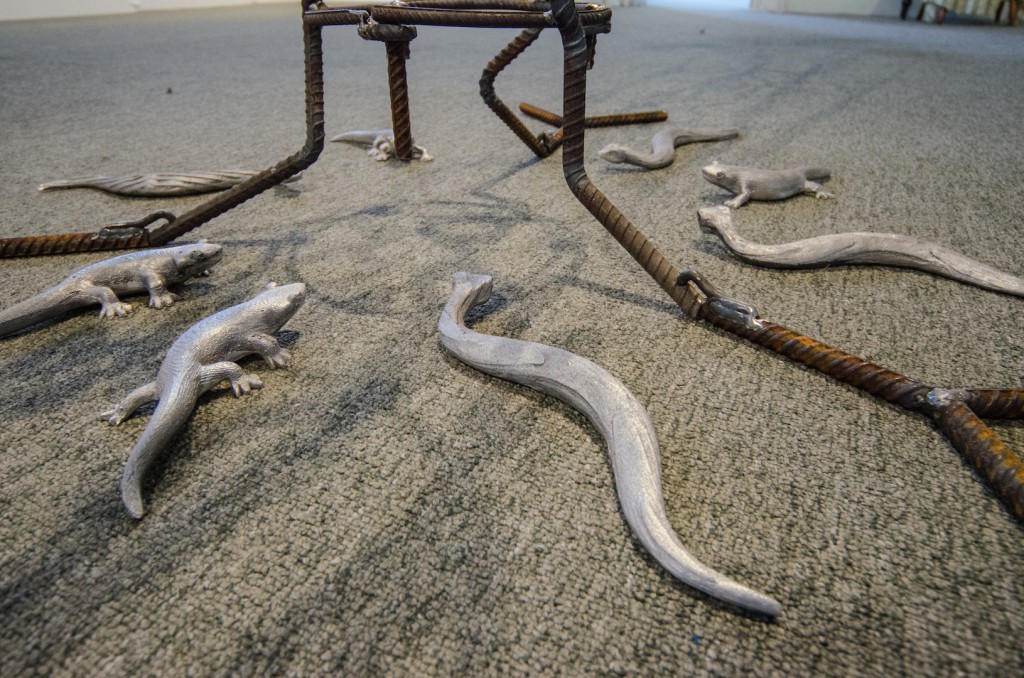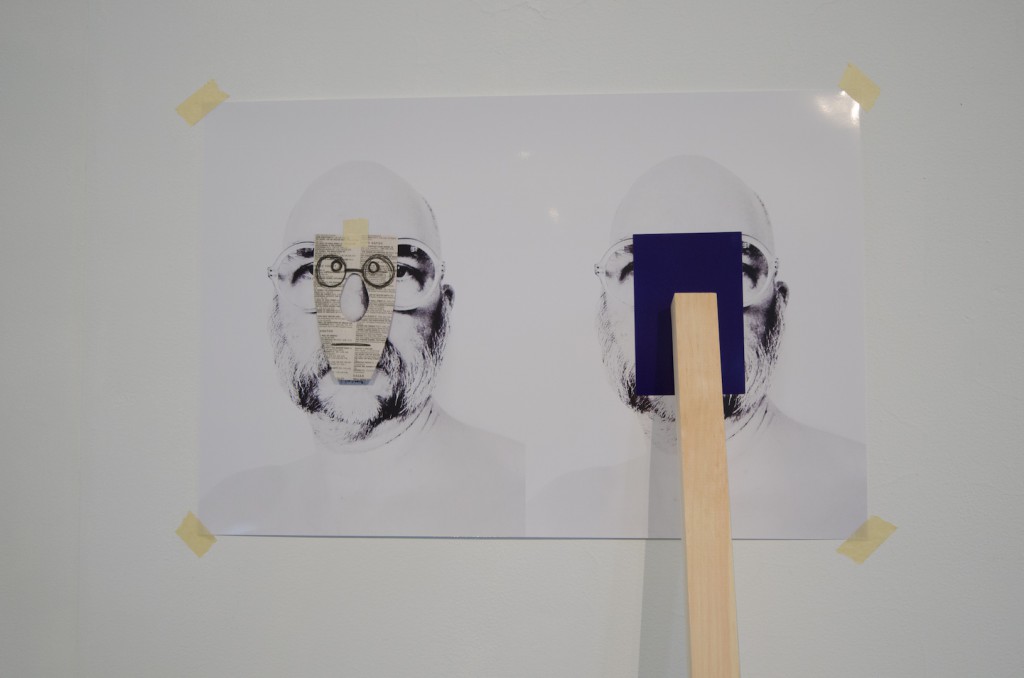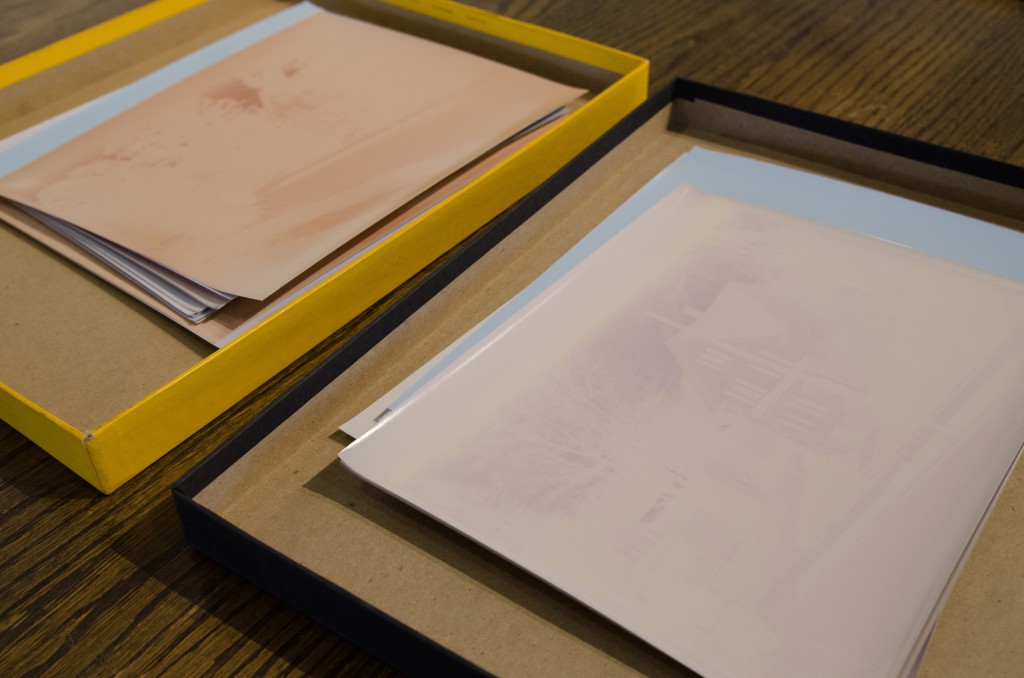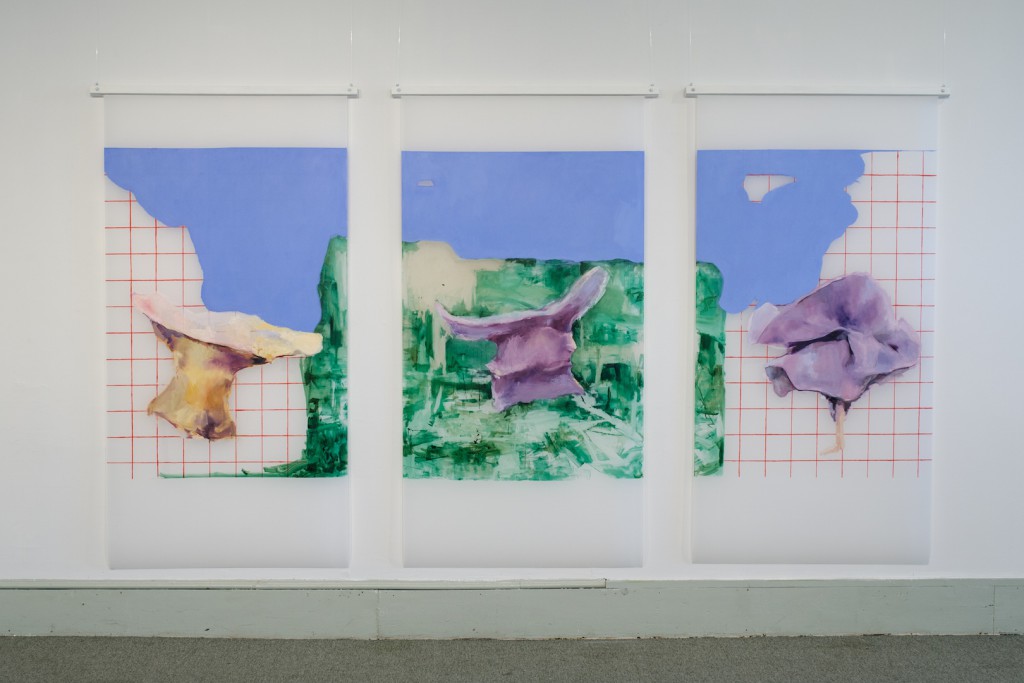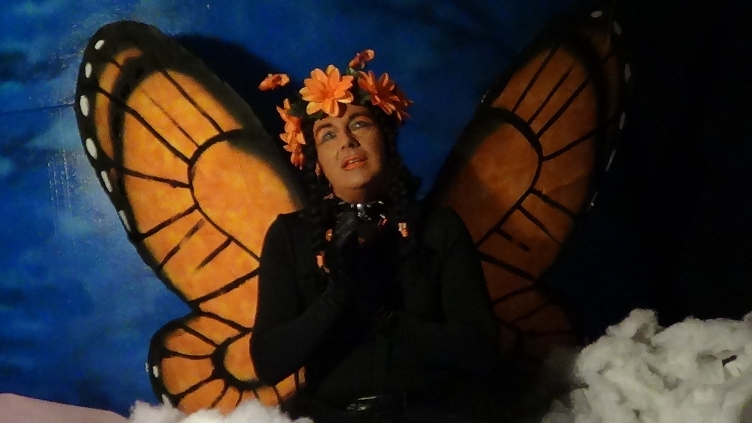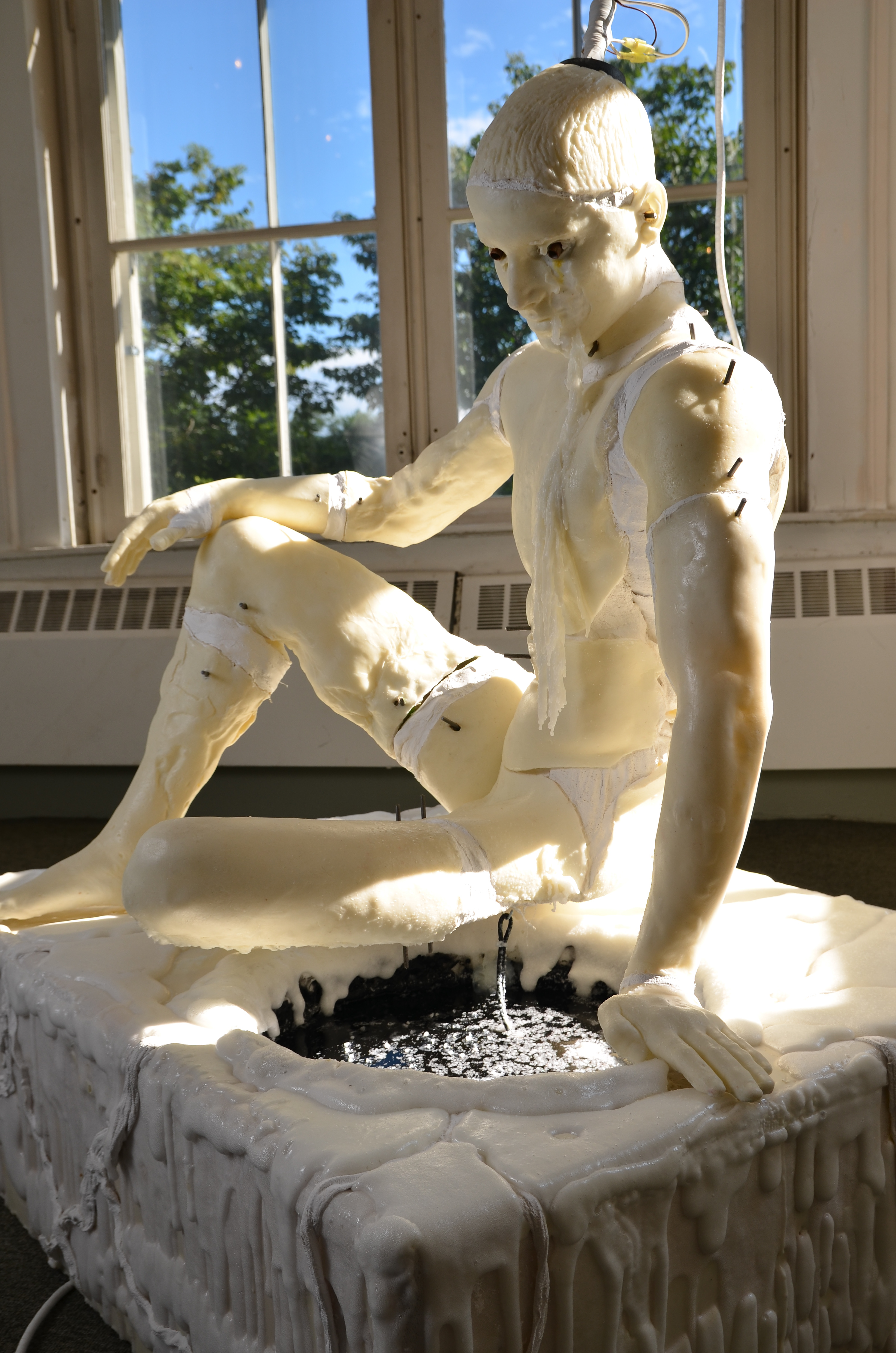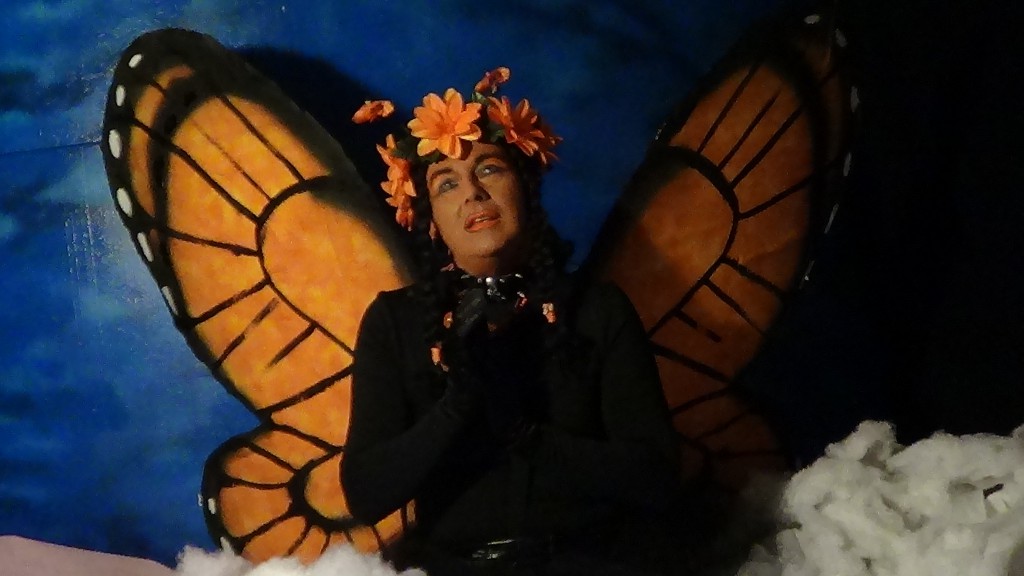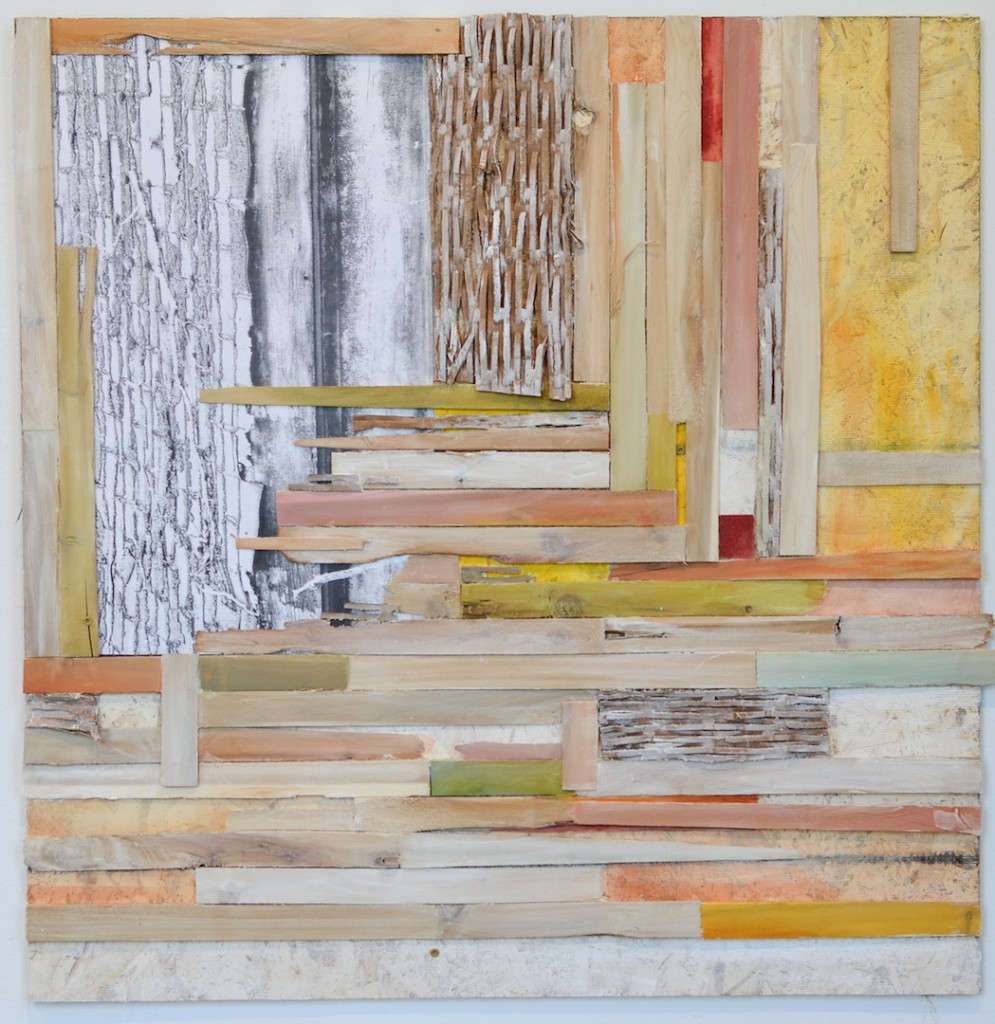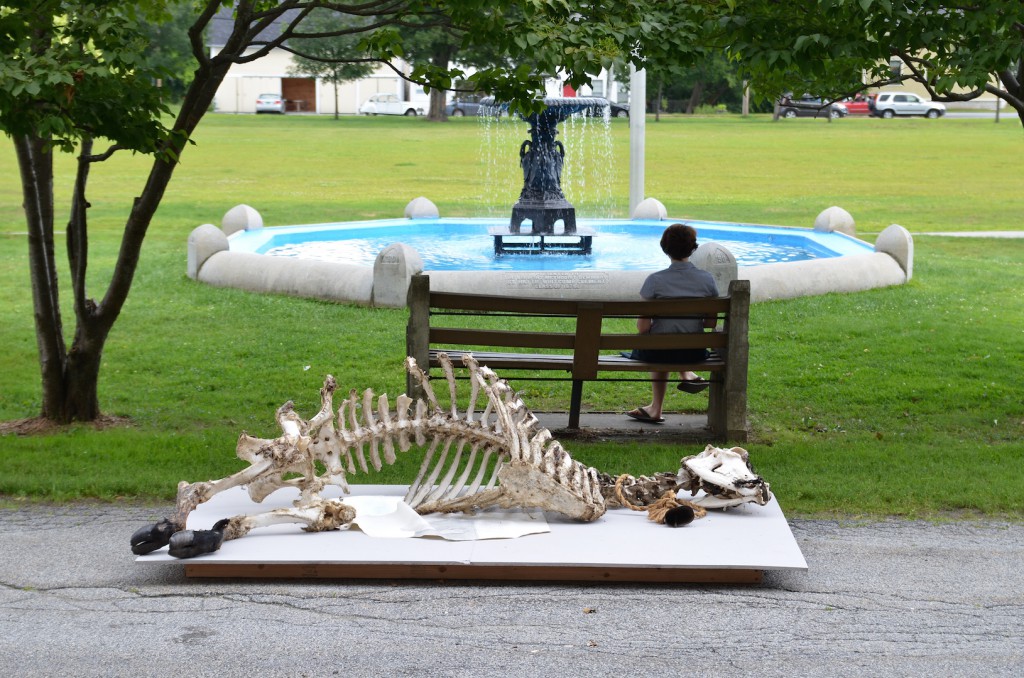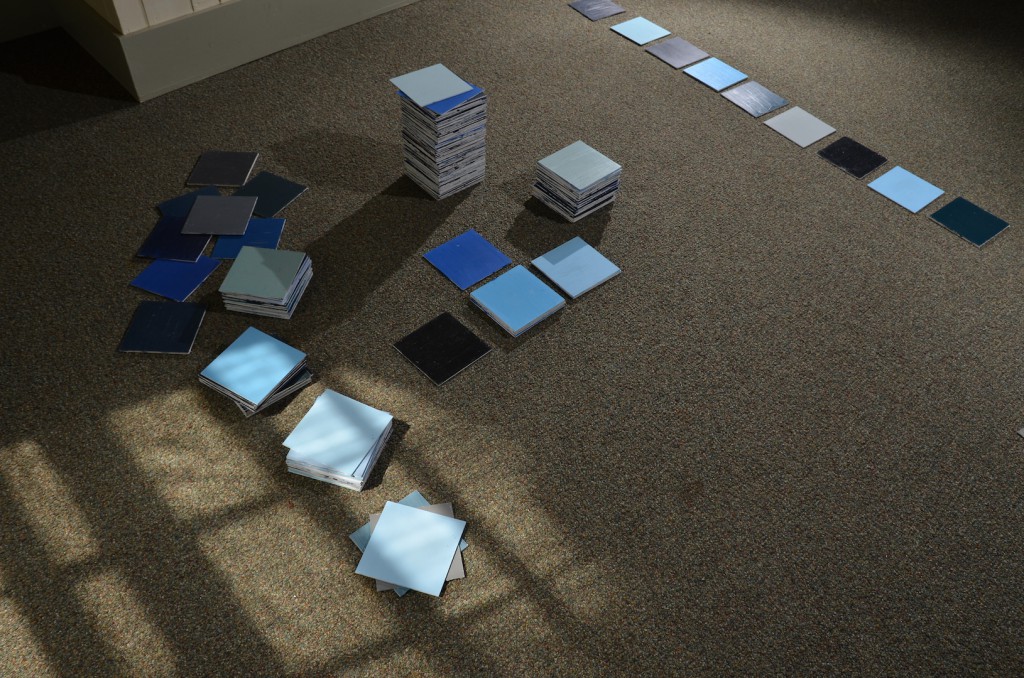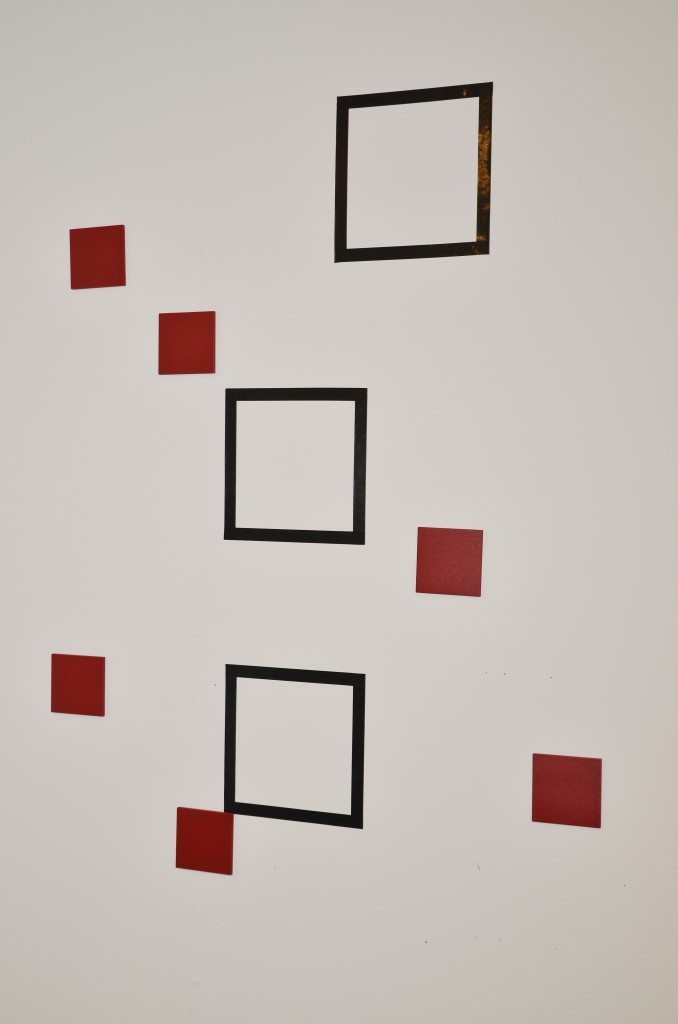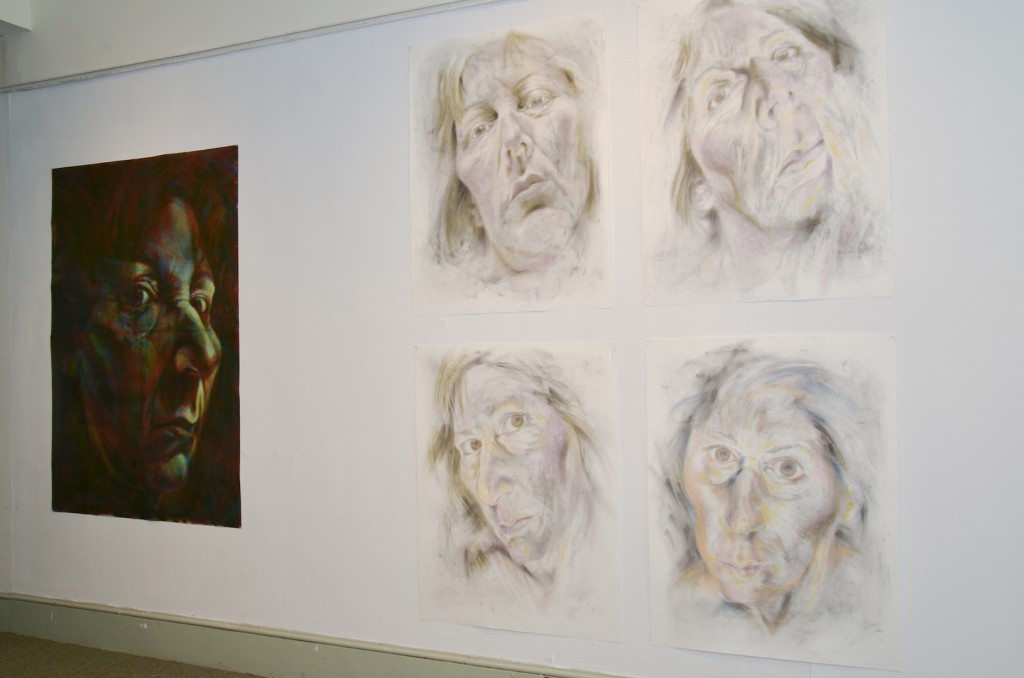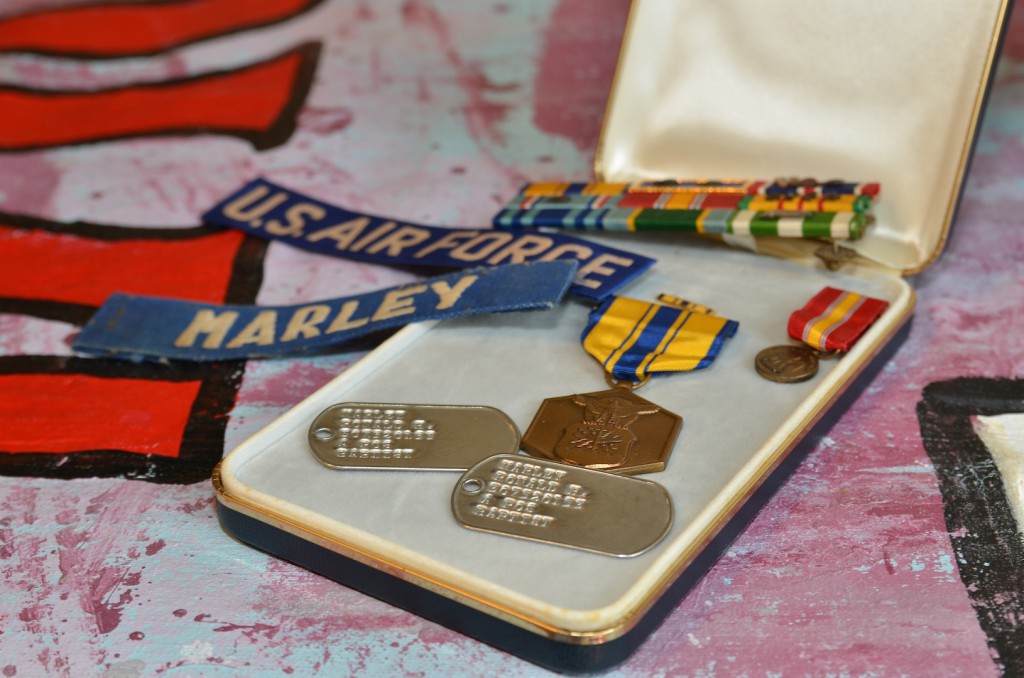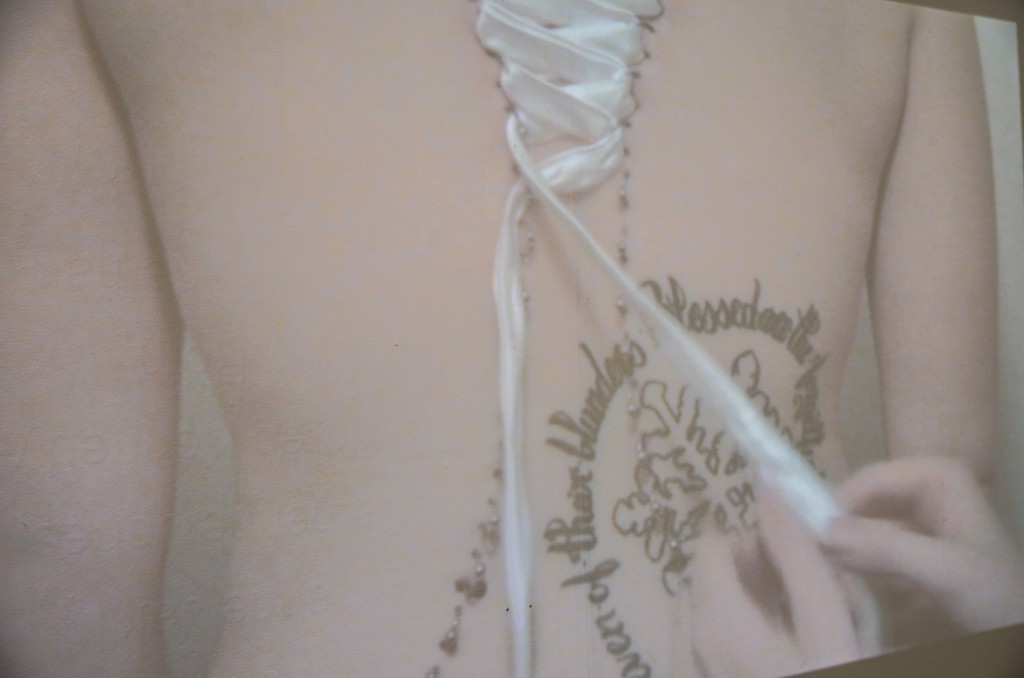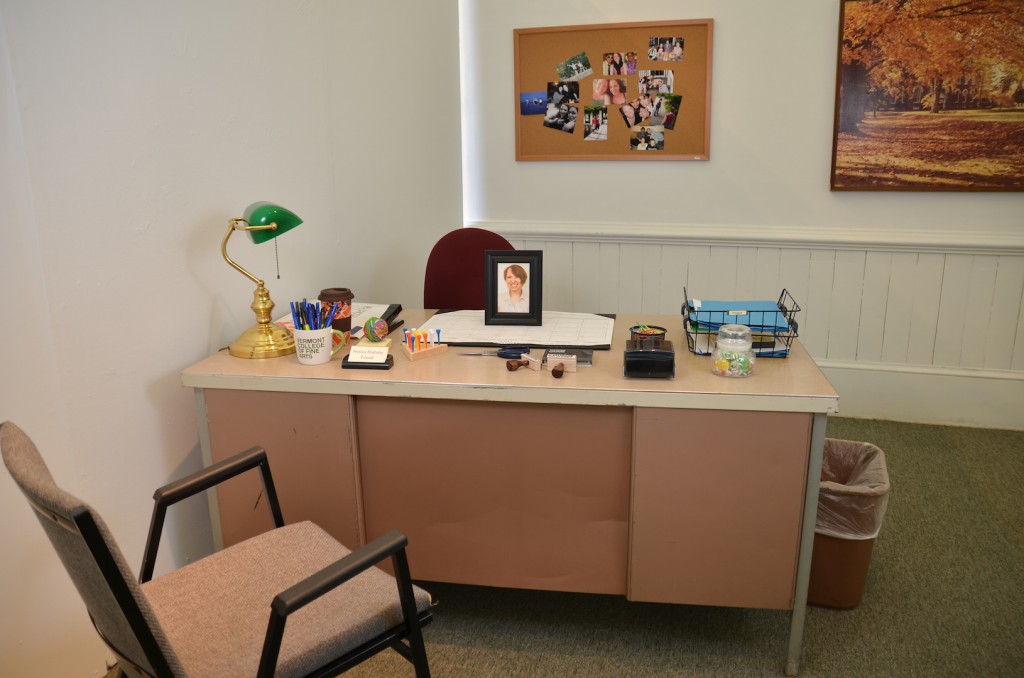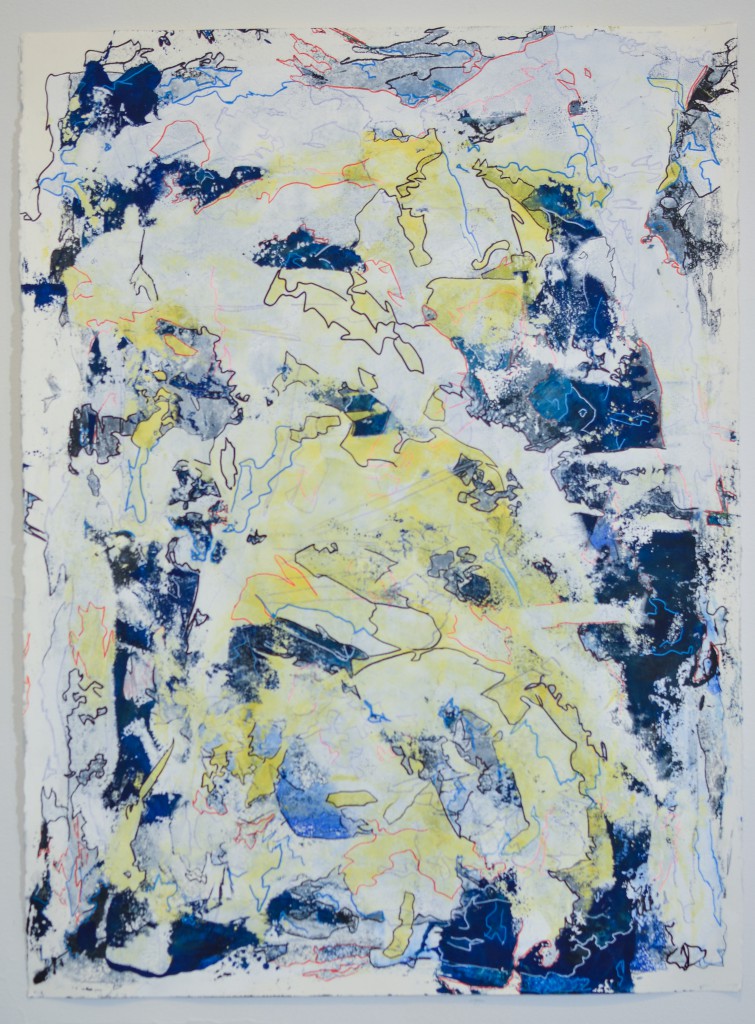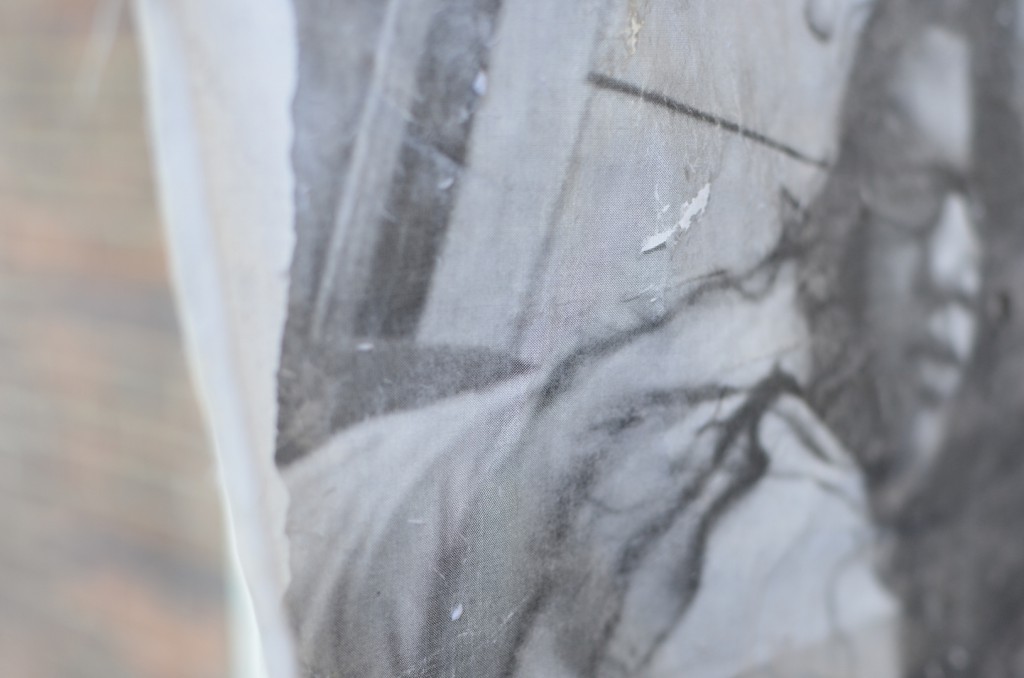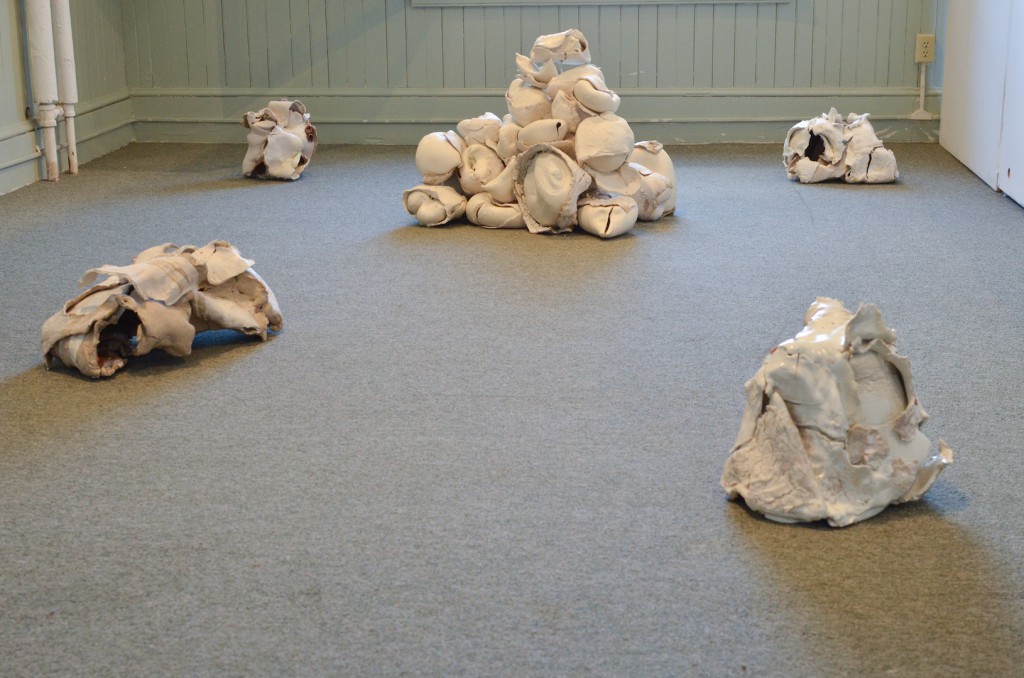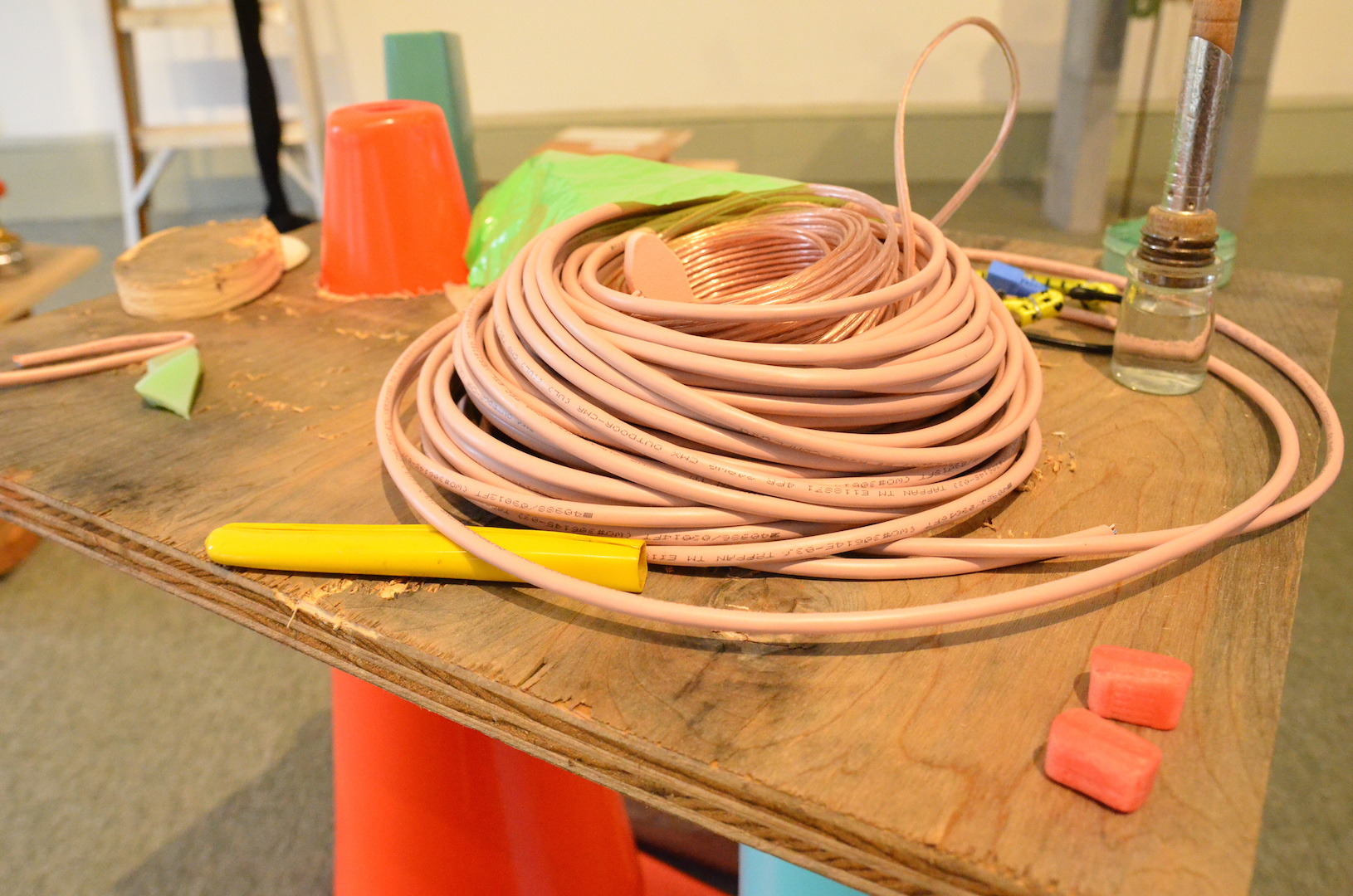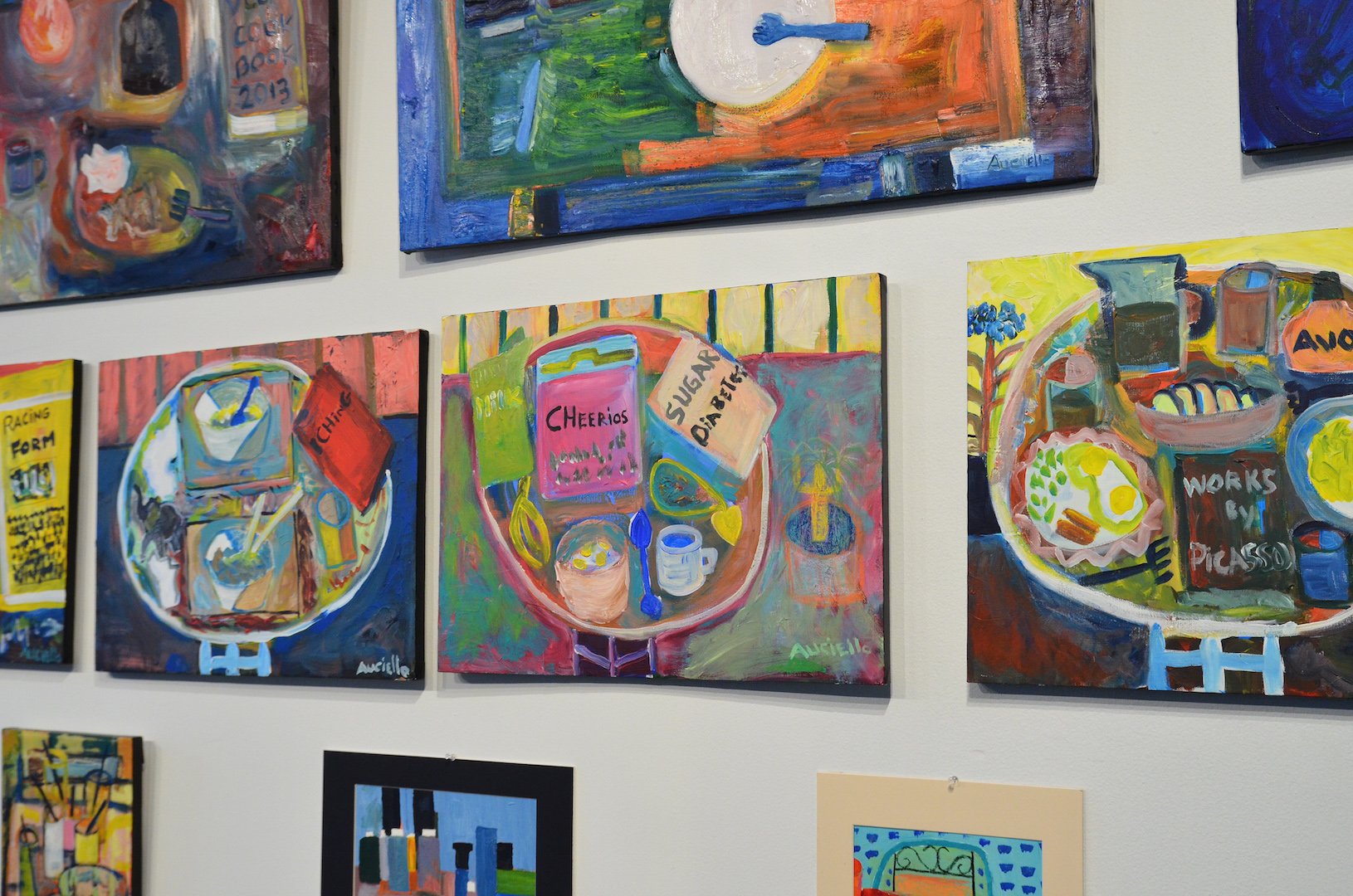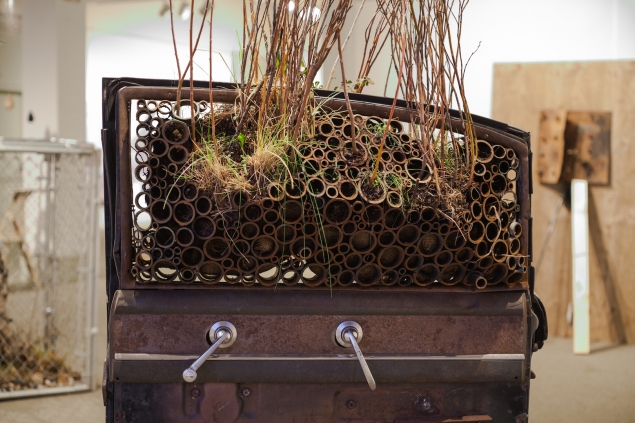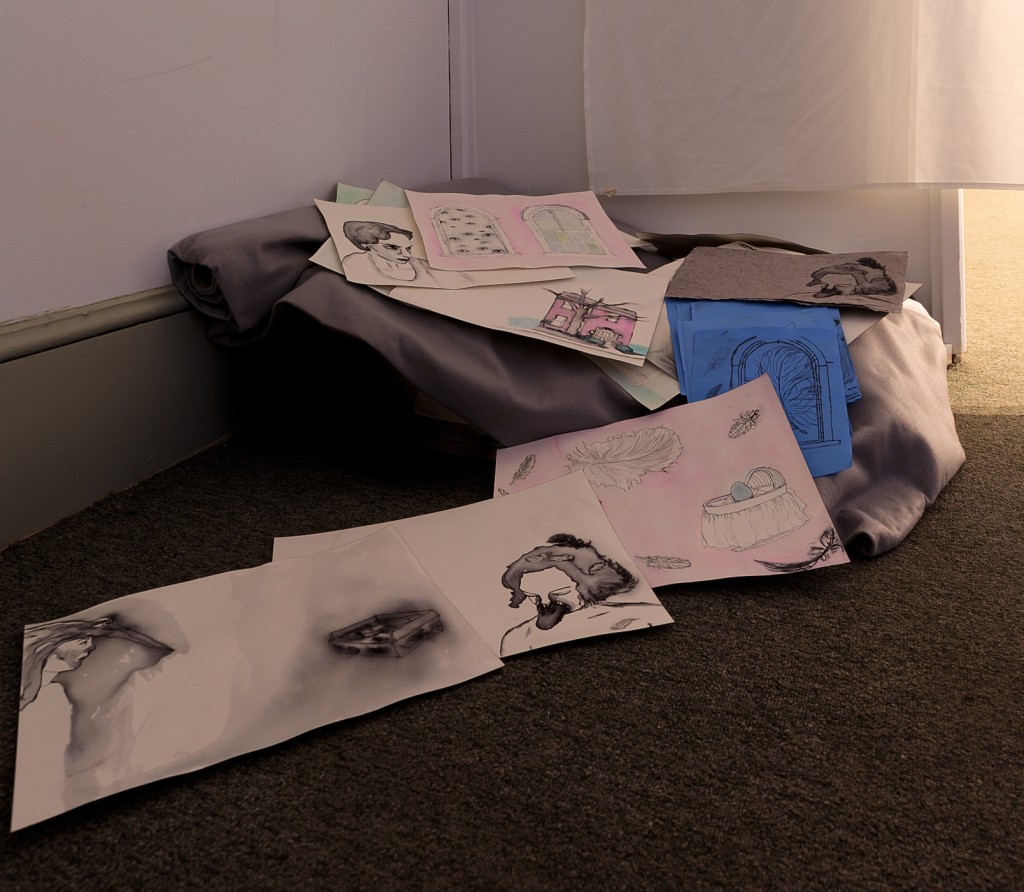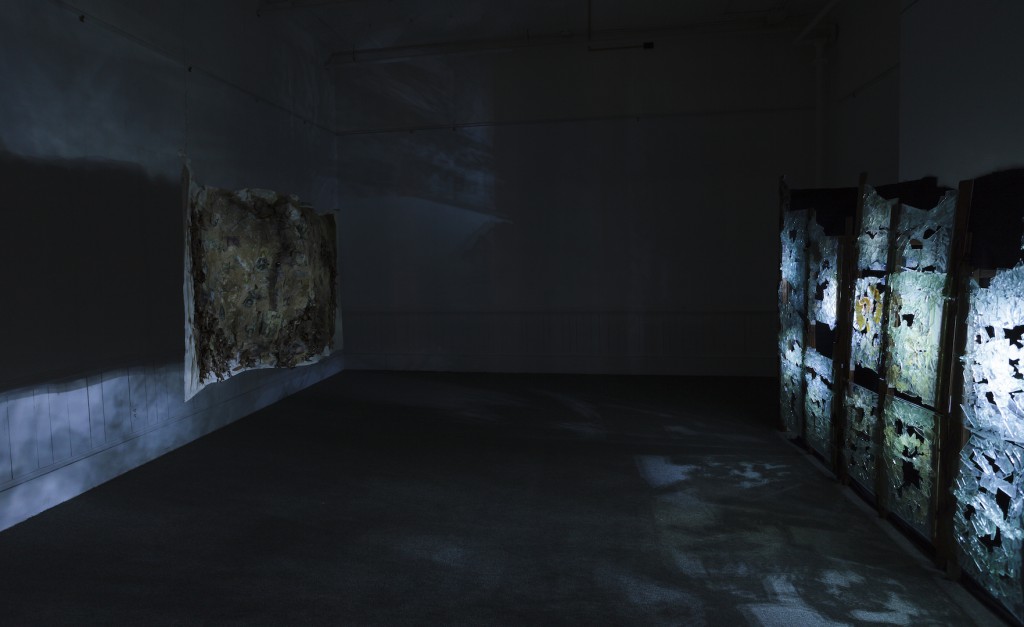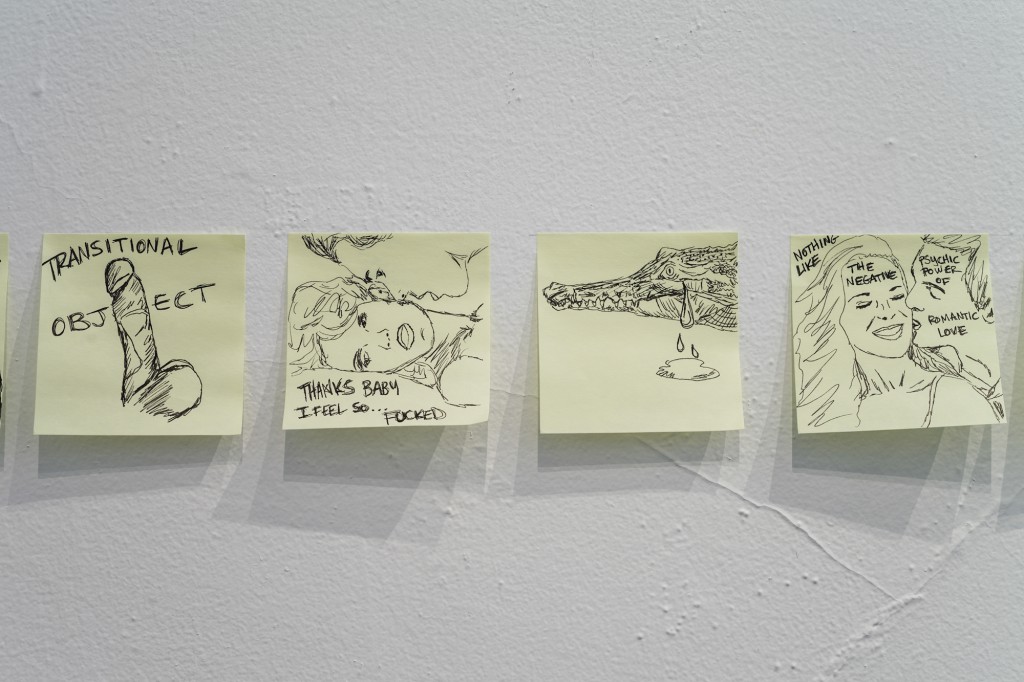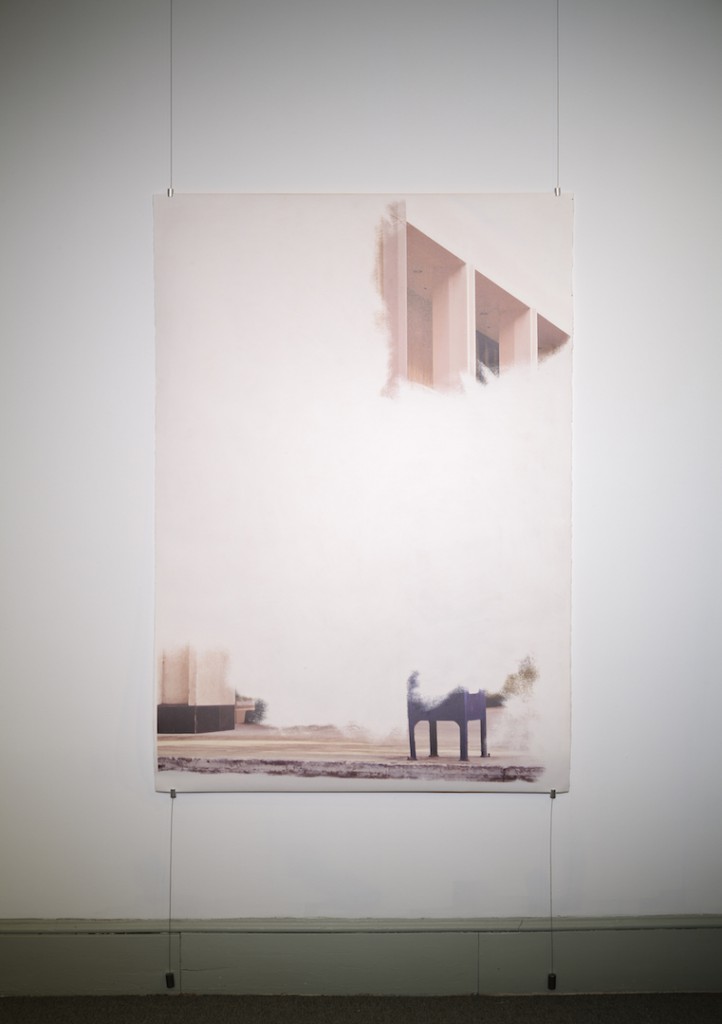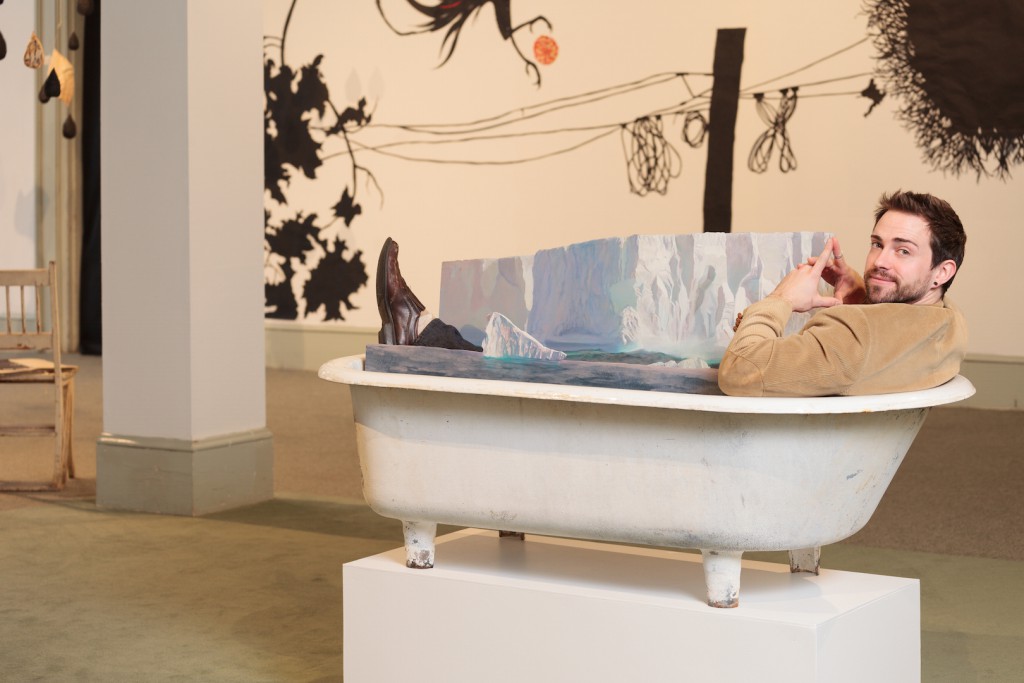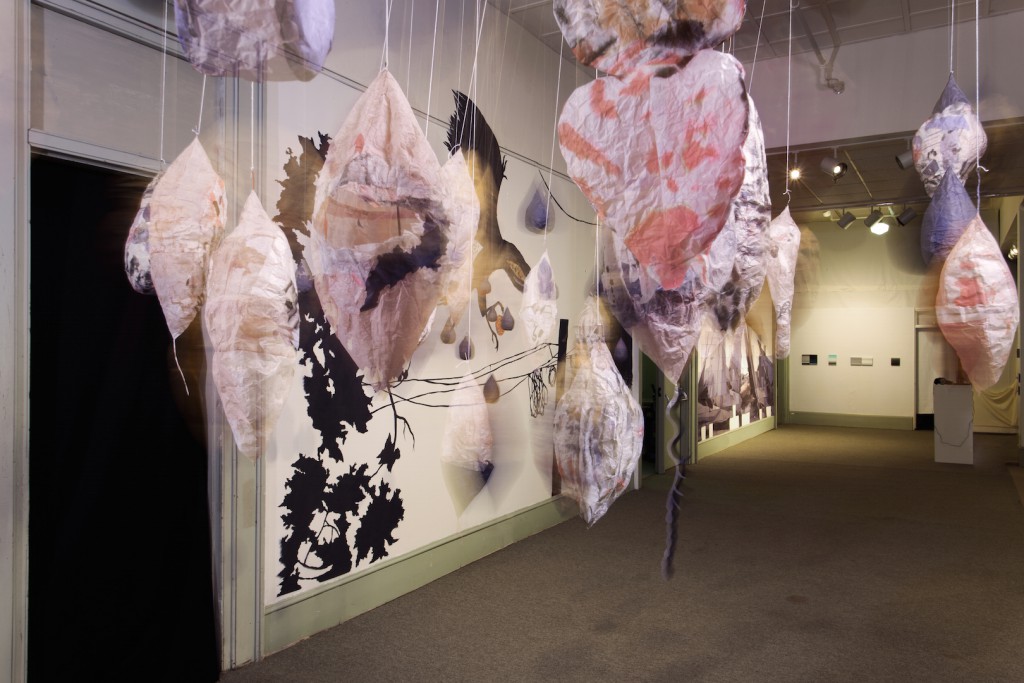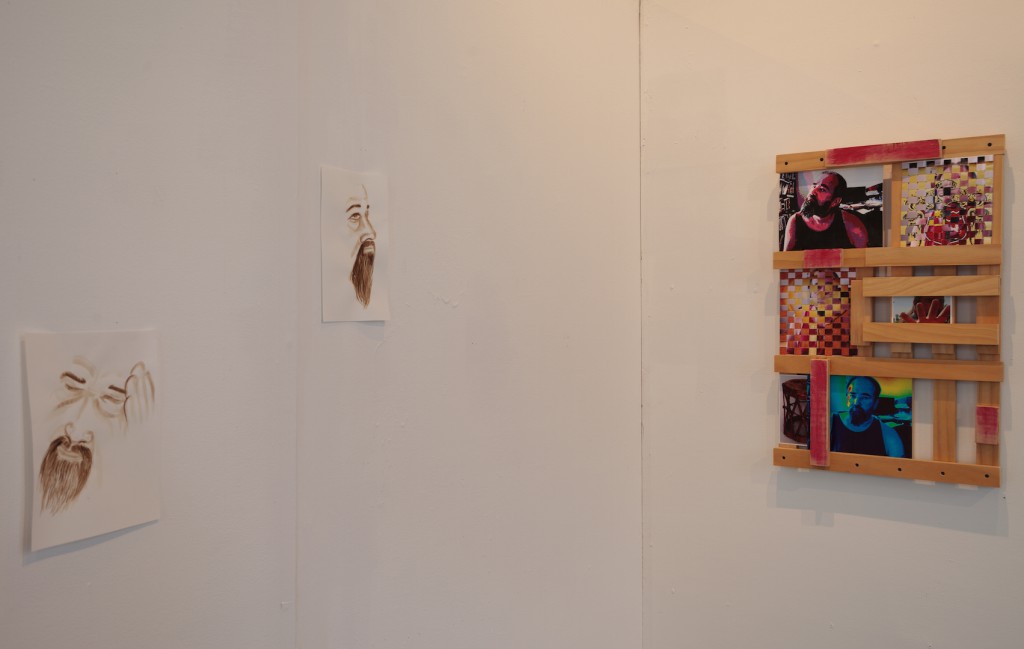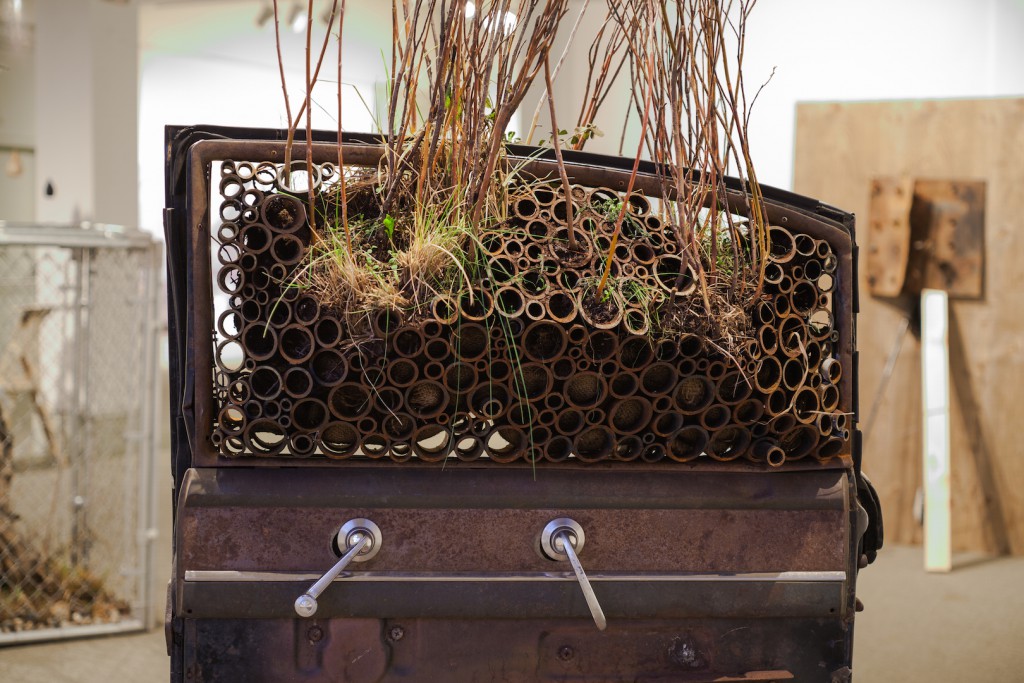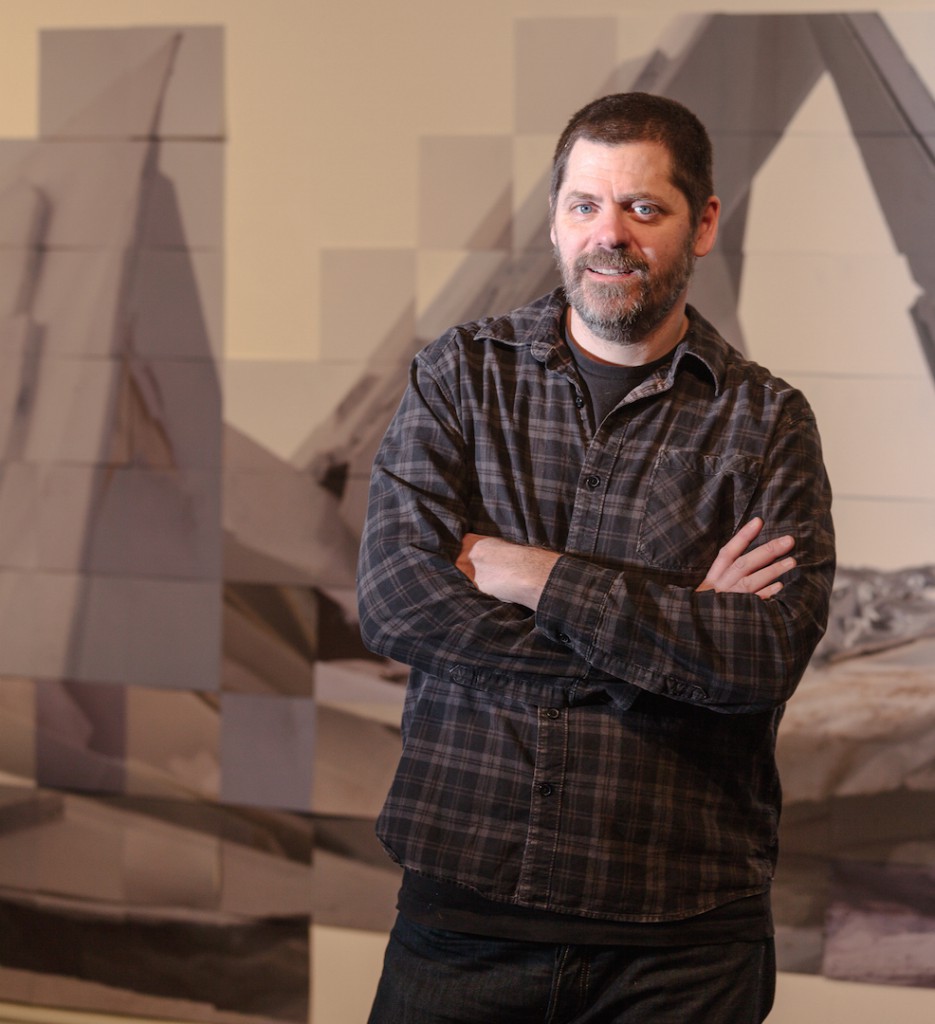In the exhibition and residency Shabby but Thriving, A.K. Burns continues a serial work that draws on theater, science fiction, philosophy, and ecological anxieties. The project is organized around five elements: power (the sun), water, land, void, and body.
In Shabby but Thriving, commissioned by and premiering at the New Museum as part of the Department of Education and Public Engagement’s R&D Season: BODY, Burns presents the project’s next chapter, a two-channel video staged within an installation that explores the subjugation and agency of various bodies. A video, titled Living Room (2017–ongoing), is the installation’s central work; it was filmed in the New Museum’s 231 Bowery space, a prewar building adjacent to the Museum that houses the artist-in-residence studio. Moving from its basement through the stairwells (partially renovated and often bearing relics of previous eras) and into a series of found and constructed interiors, the video treats the entire building as both a stage and a metaphorical body. The building exists as a hermetic ecosystem and protagonist in the narrative of Living Room, as performers use their bodies to labor and leisure, choreograph and dialogue, bathe and subsist within this vital architectural interior. Likewise, furniture and props act as both benign objects and political subjects.
The installation includes sculptural objects that augment and animate the video’s narrative: a stripped and gutted couch outfitted with underglow, cast bags of dirt embedded with foil candies, a carpet soiled during the couch demolition, and fishing lures and lines stretched across walls.
The exhibition is curated by Johanna Burton, Keith Haring Director and Curator of Education and Public Engagement, and Sara O’Keeffe, Assistant Curator.
Public programs
Body Politic: From Rights to Resistance
Sunday, February 5, 11:30am–6:30pm
This event features information sessions with lawyers, activists, and grassroots organizers on issues centered around the body: civil disobedience, protest, healthcare, policing, prisons, immigration, and environmental contamination. Each session will focus on resource sharing and modes of resistance, and will include presentations followed by discussion with the audience. Participants include staff from Callen-Lorde Community Health Center, the Center for Constitutional Rights, the Center for Reproductive Rights, the New York Civil Liberties Union, the New York Environmental Law and Justice Project, and the Sylvia Rivera Law Project.
The Question of Quantum Feminism
Thursday, March 9, 7pm
This roundtable discussion brings together artists exploring the evolving and expansive topic of quantum feminism, and considers how an understanding of bodies as sensory systems can be a starting point for discussions around ethics and “entangled relations of difference.” Panelists include A.K. Burns, Harry Dodge, Carolyn Lazard, Anicka Yi, and Constantina Zavitsanos.
Listening Party: Poetry and Record Release for Leave No Trace
Thursday, April 20, 7pm
In celebration of A.K. Burns’ Leave No Trace (2016) this record release party includes performances and readings by artists and writers including Justin Allen, Fia Backström, CAConrad, Katherine Hubbard, and Juliana Huxtable. Leave No Trace is an experimental audio project released as a limited edition vinyl with an accompanying poem. The recording consists of two full length LP tracks that combine ambient environmental recordings, vocalization, sounds generated from various materials, and an old electric guitar. The title references wilderness ethics, pointing to questions around unregulated spaces, bodies and actions that go unrecorded, and what is natural or naturalized.
Support for A.K. Burns: Shabby but Thriving
About New Museum
The New Museum is the only museum in New York City exclusively devoted to contemporary art. Founded in 1977, the New Museum is a center for exhibitions, information, and documentation about living artists from around the world. From its beginnings as a one-room office on Hudson Street to the inauguration of its first freestanding building on the Bowery designed by SANAA in 2007, the New Museum continues to be a place of experimentation and a hub of new art and new ideas.
